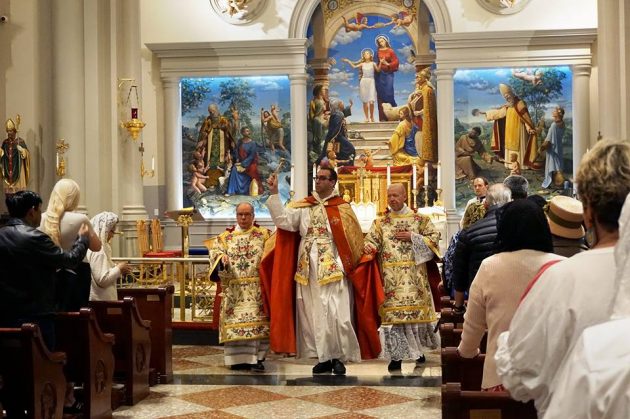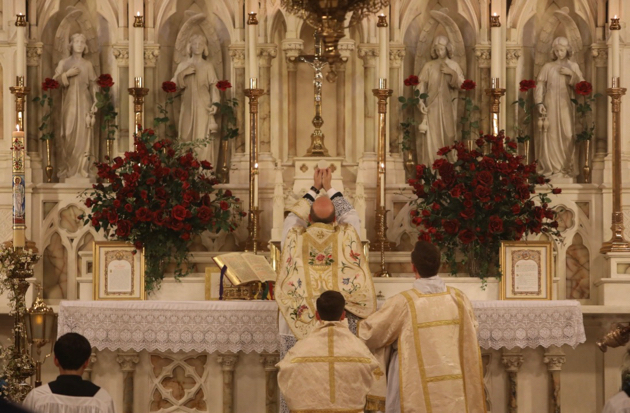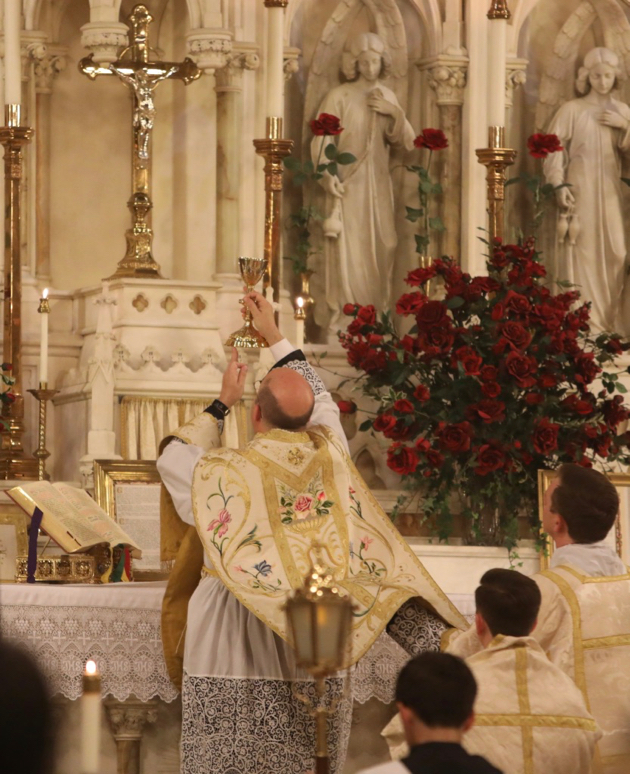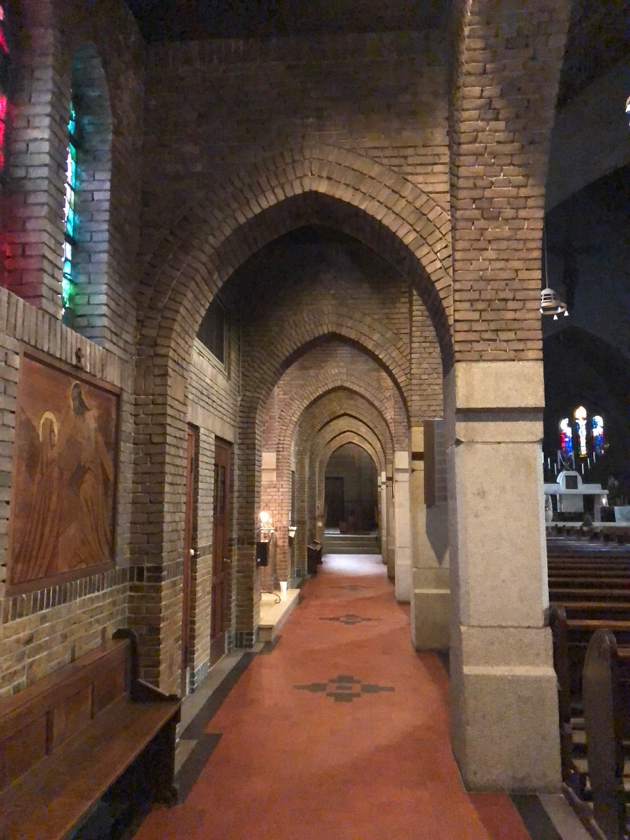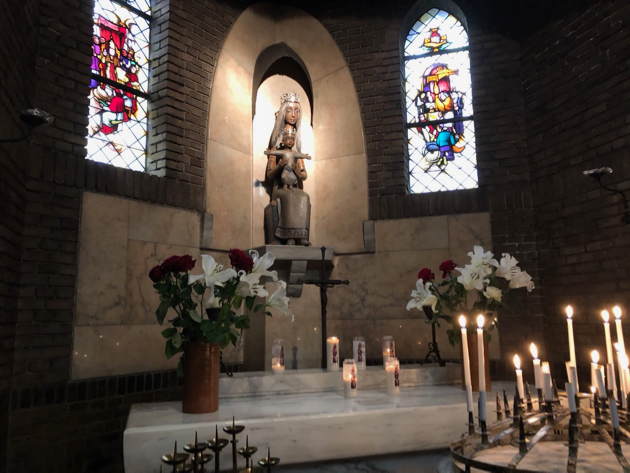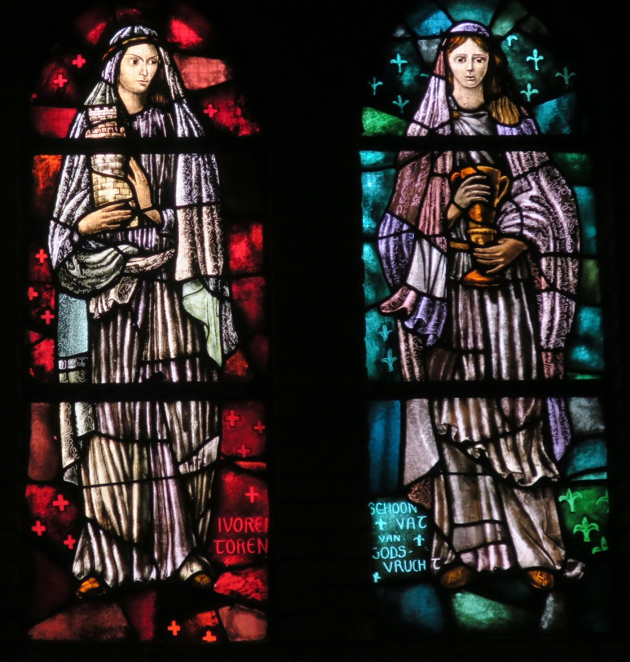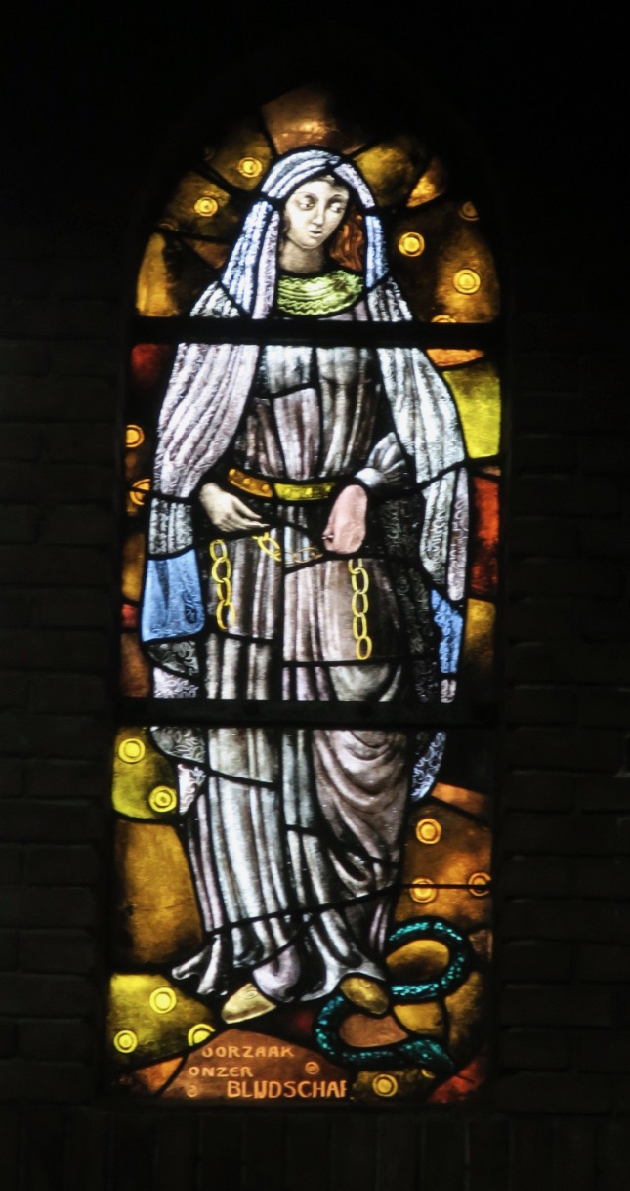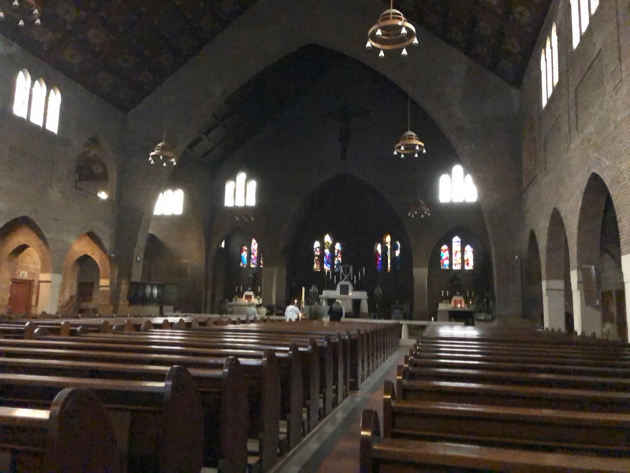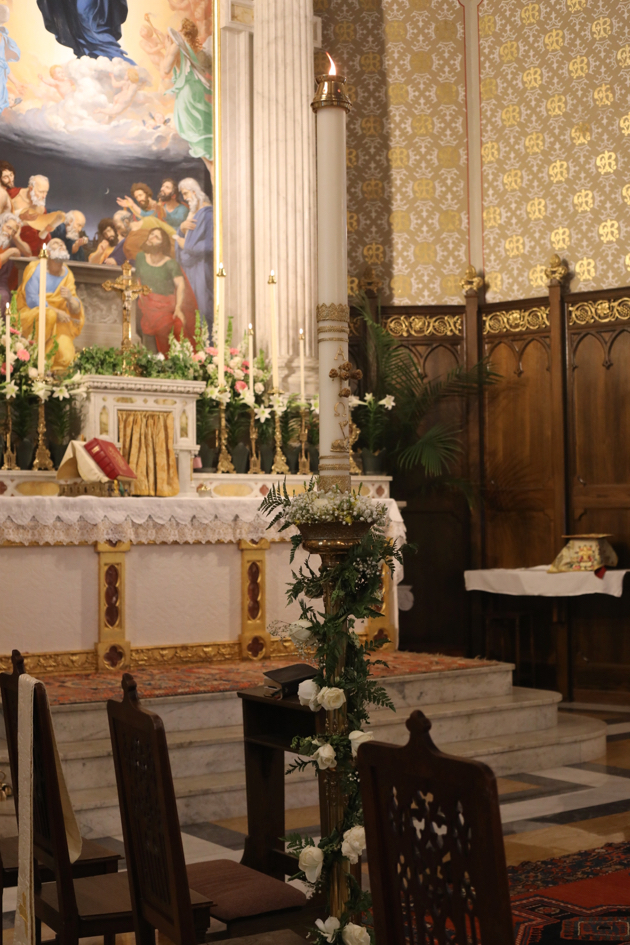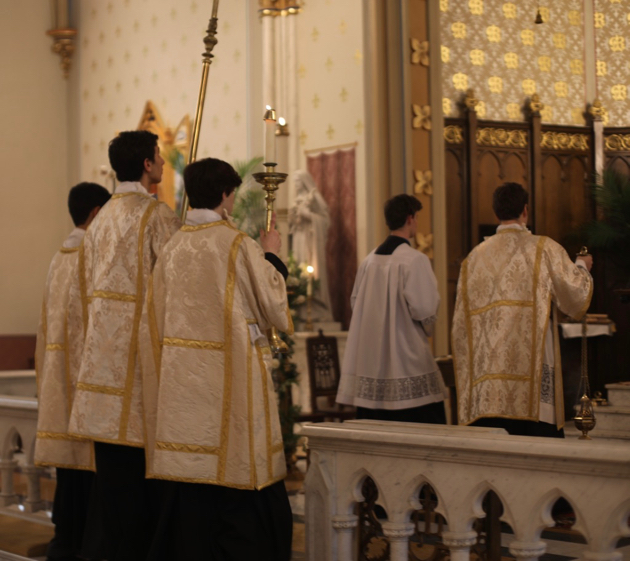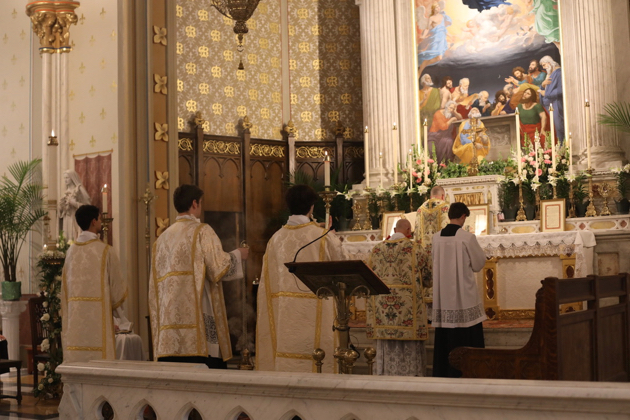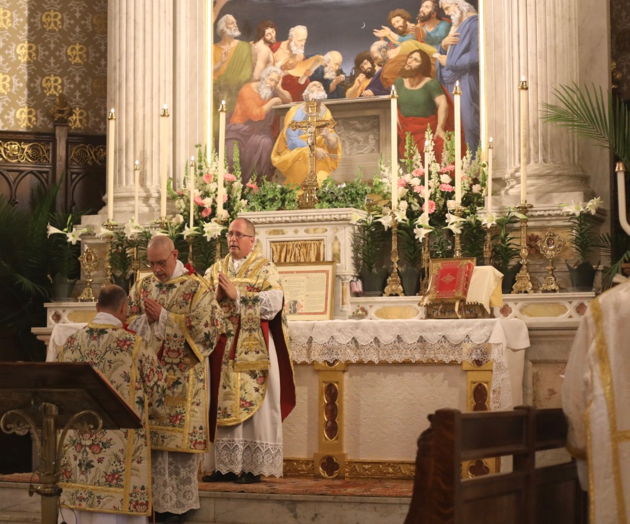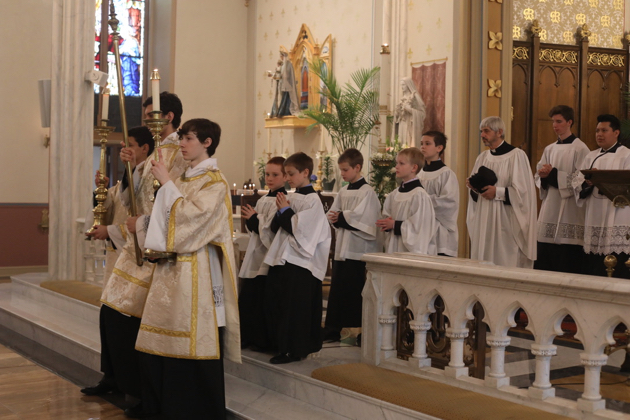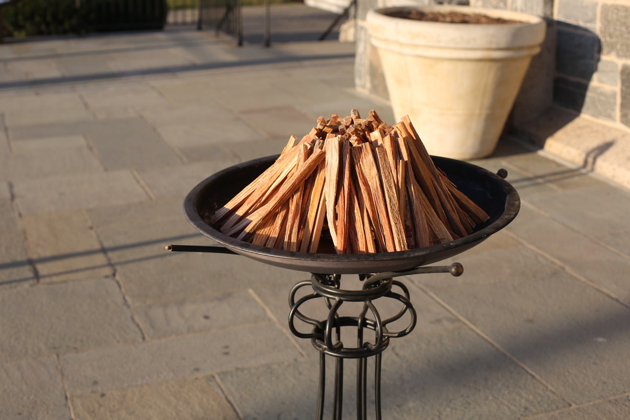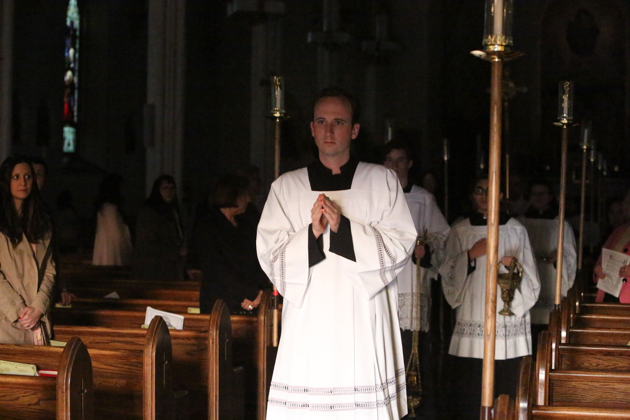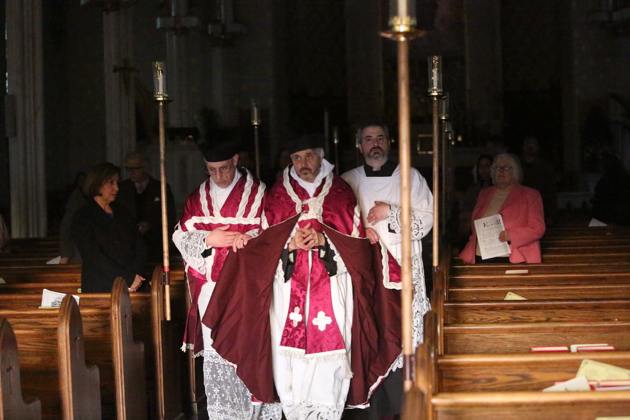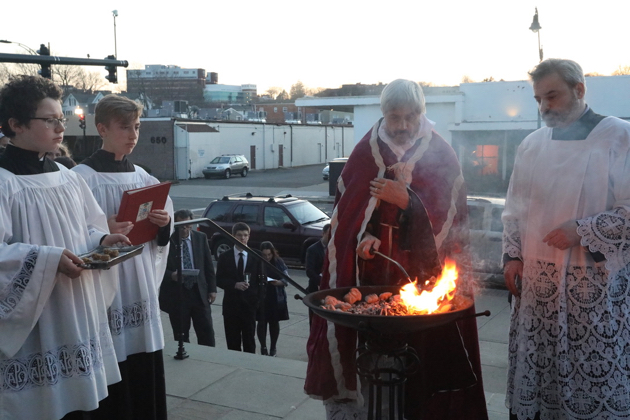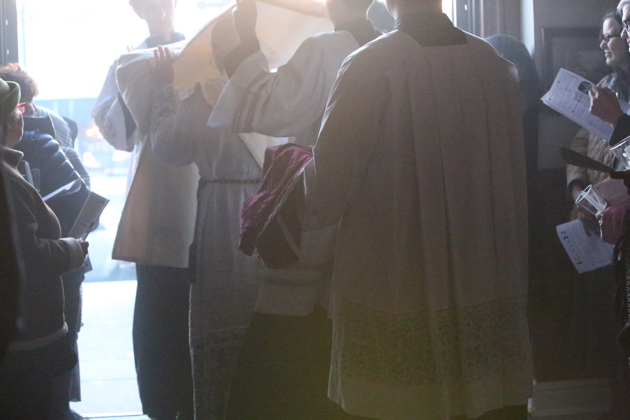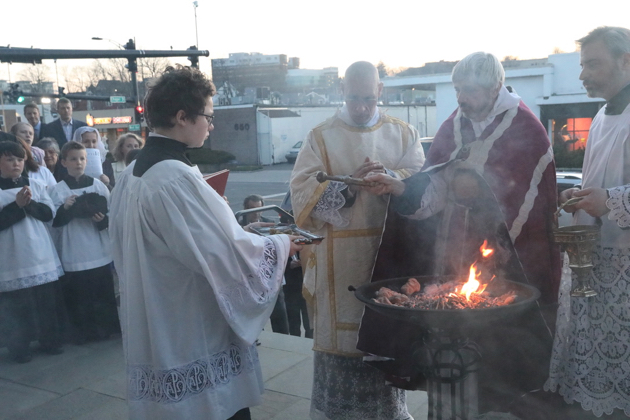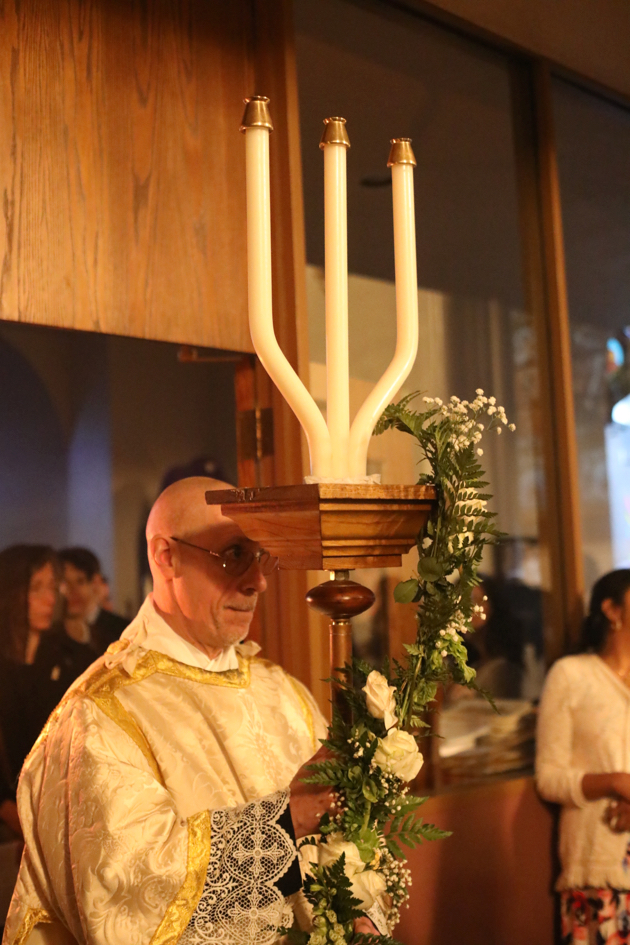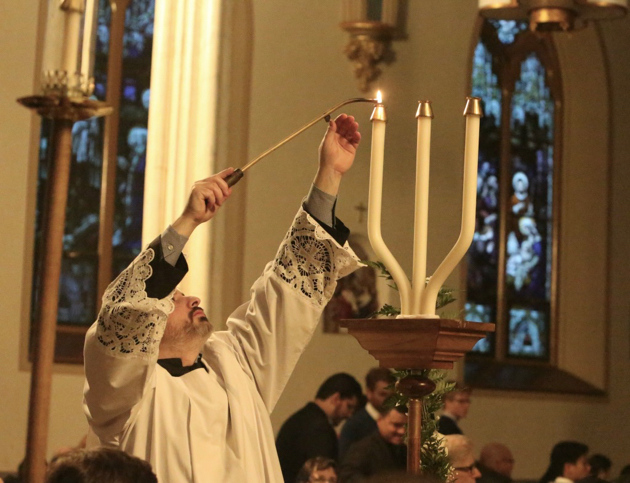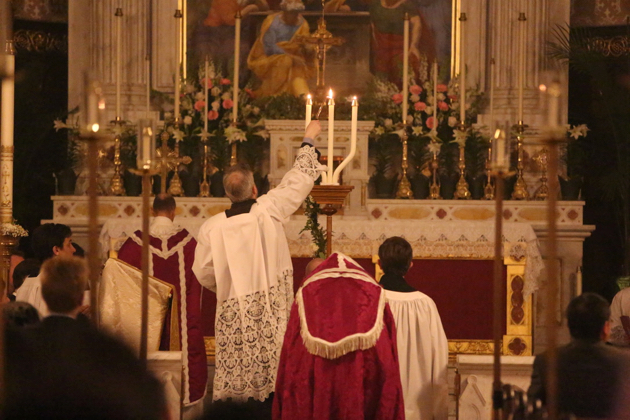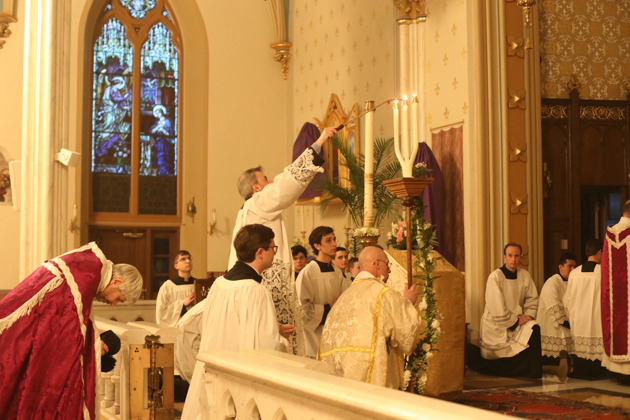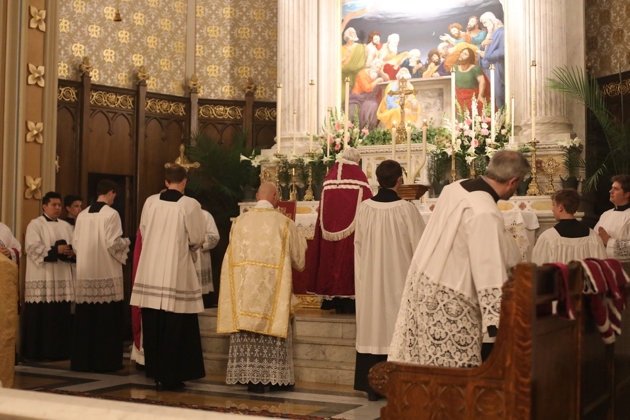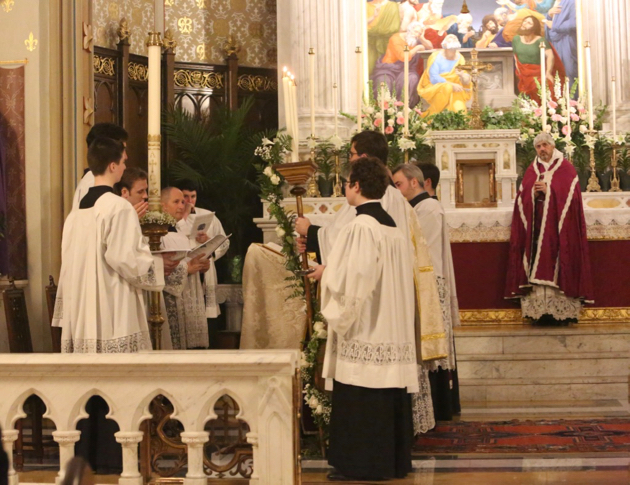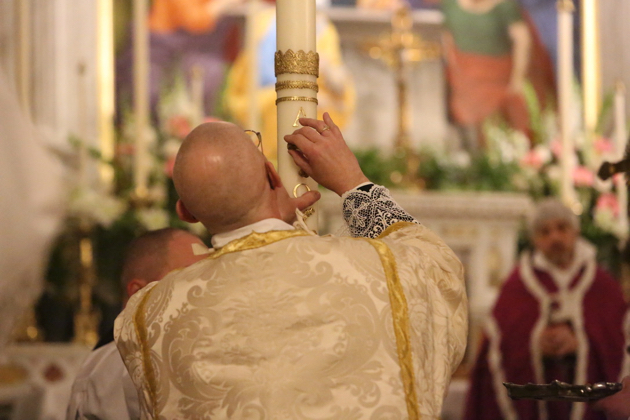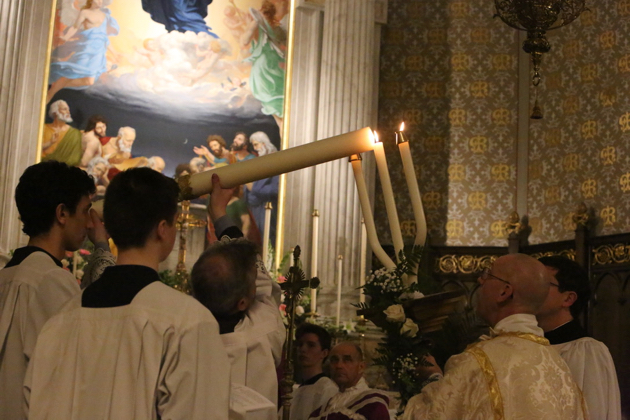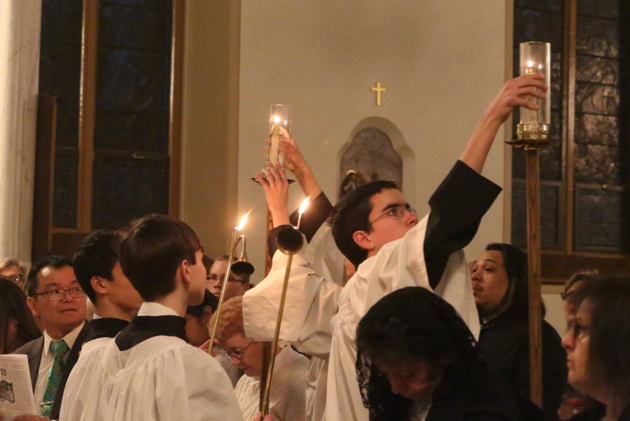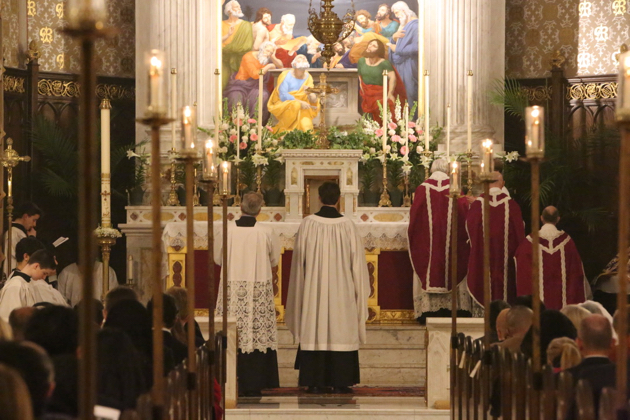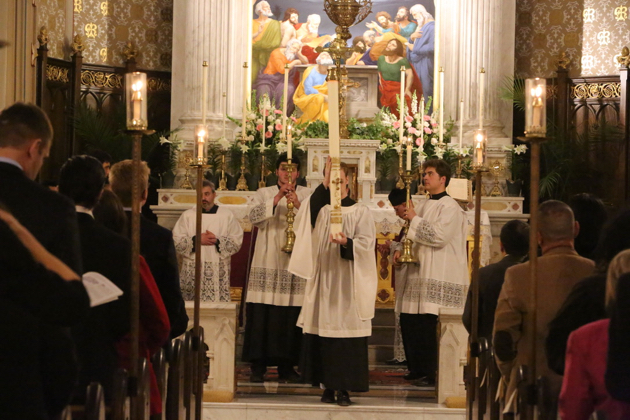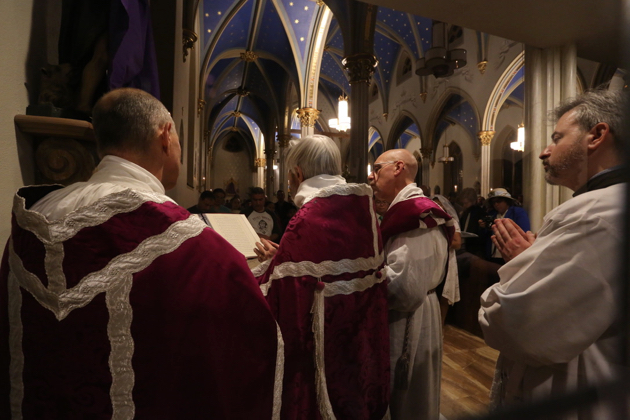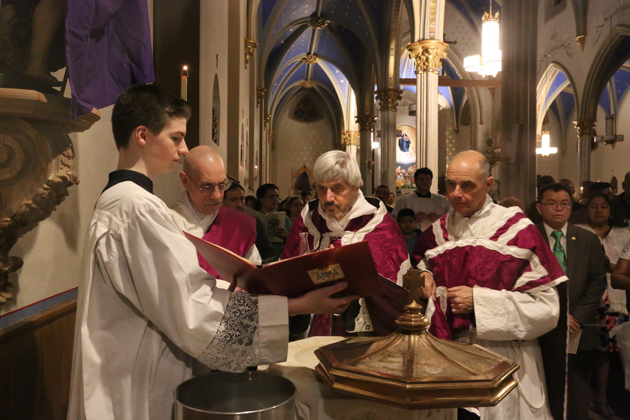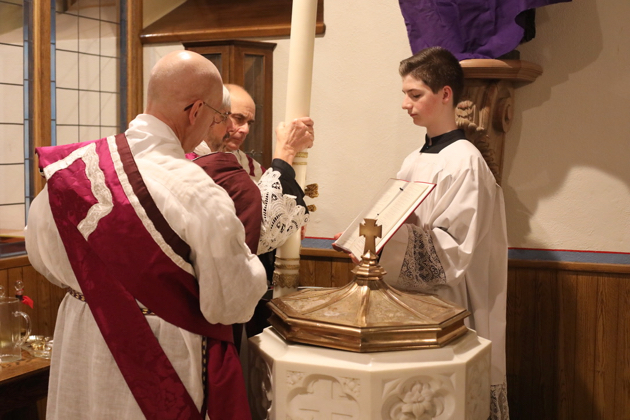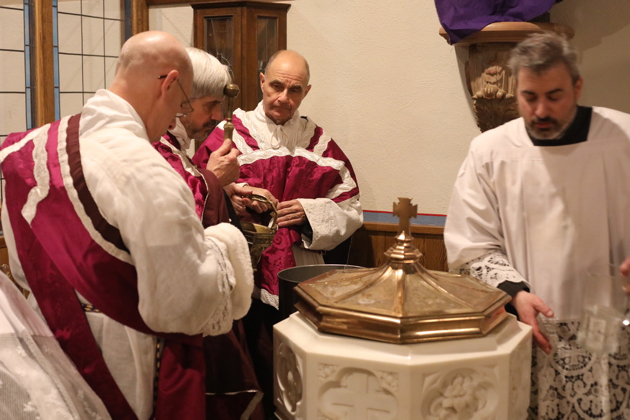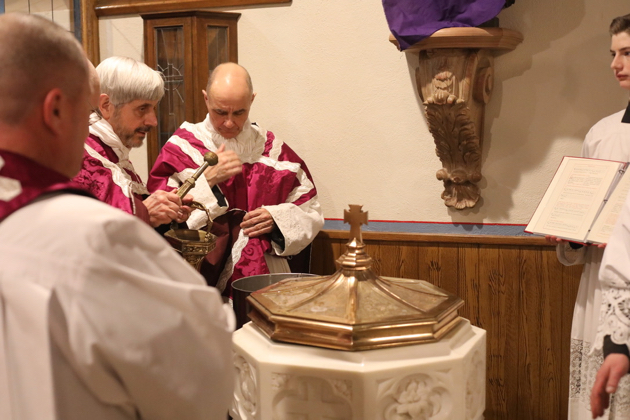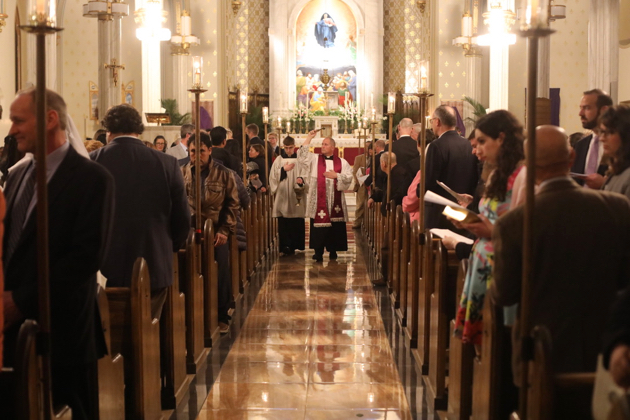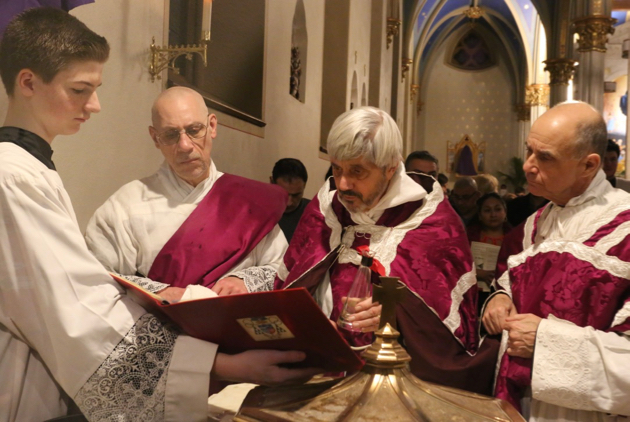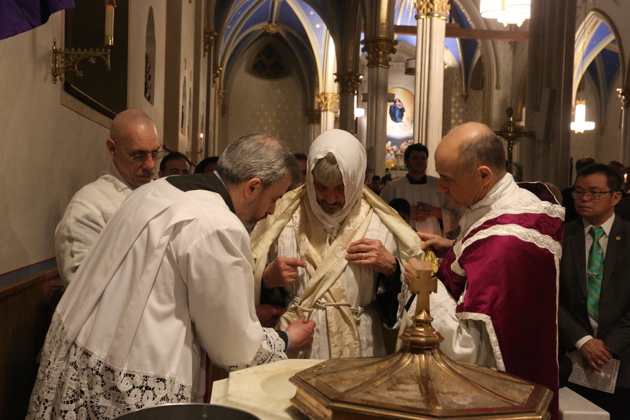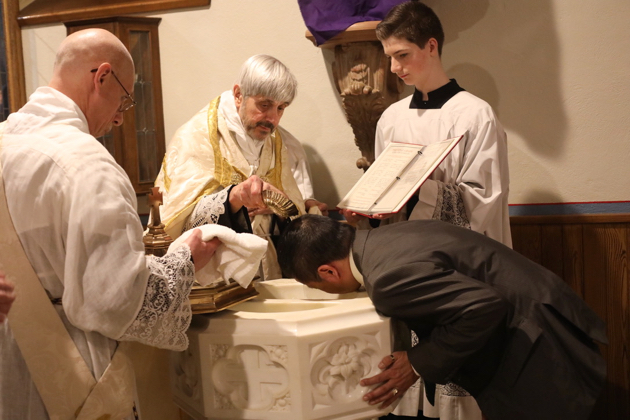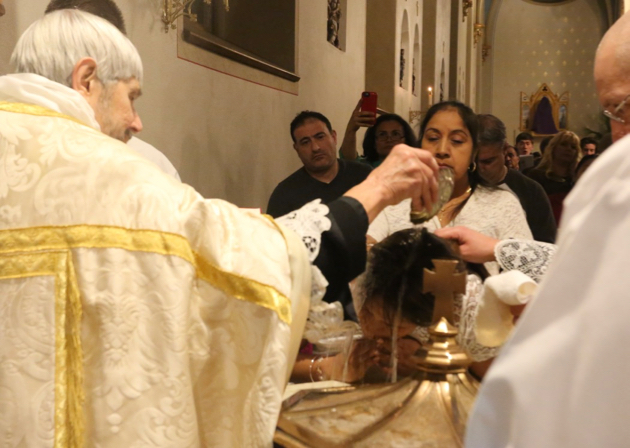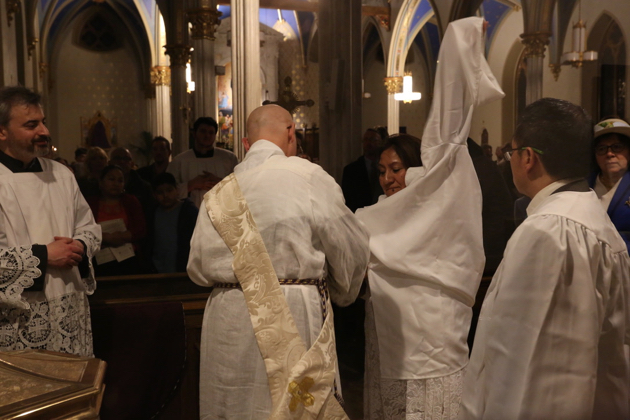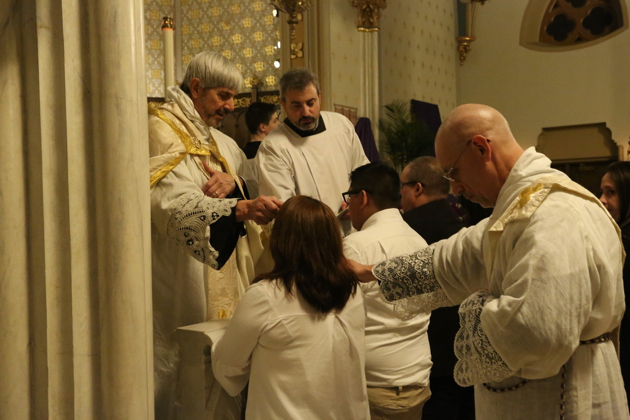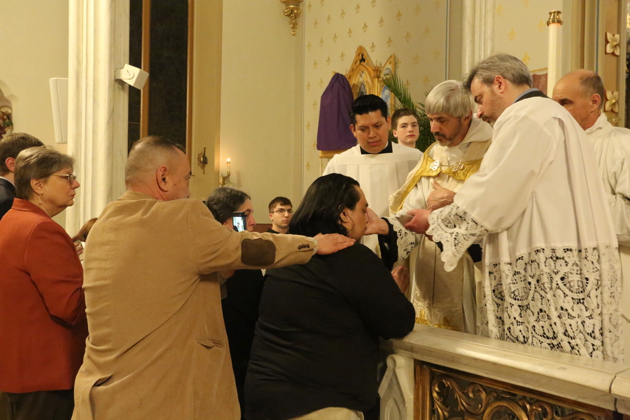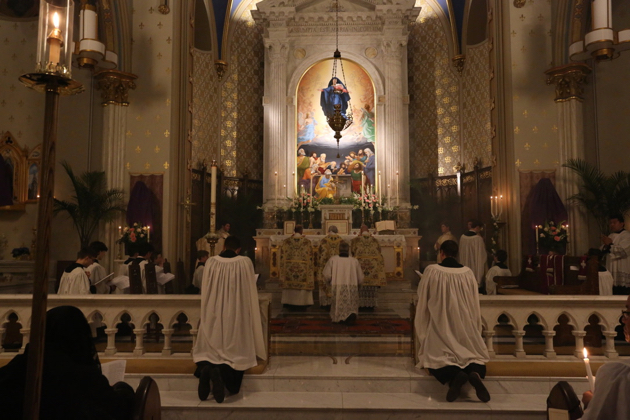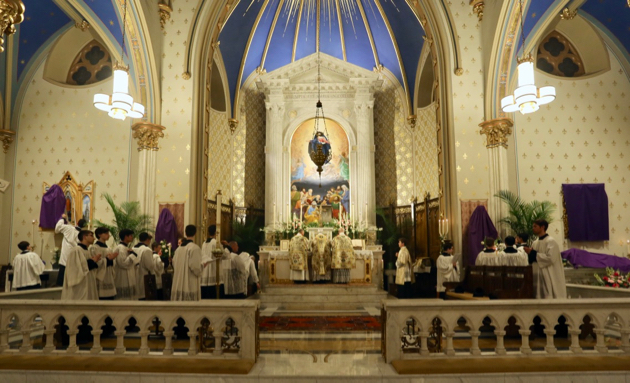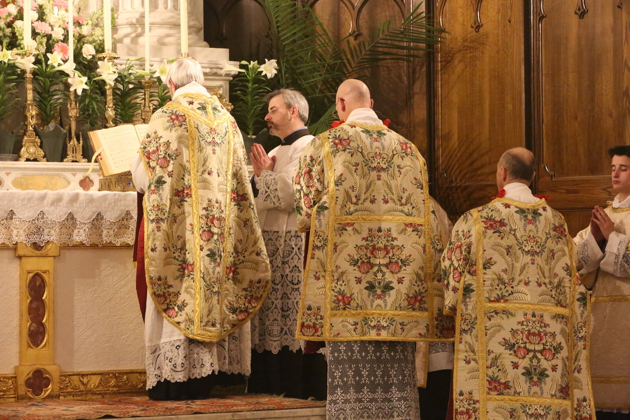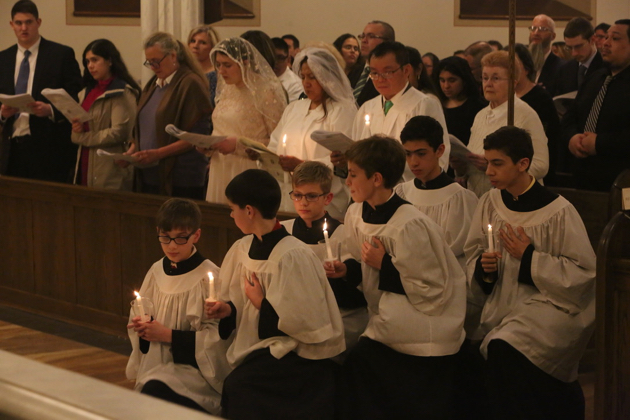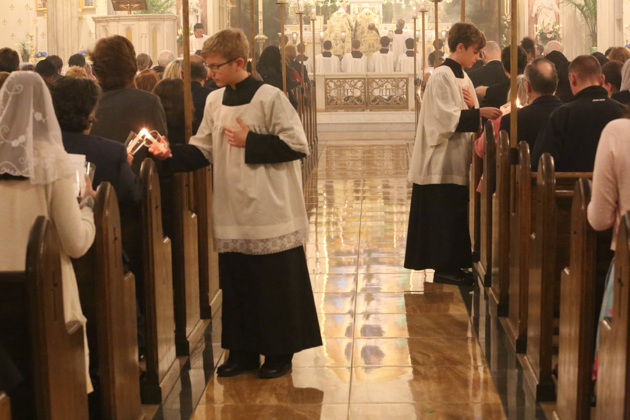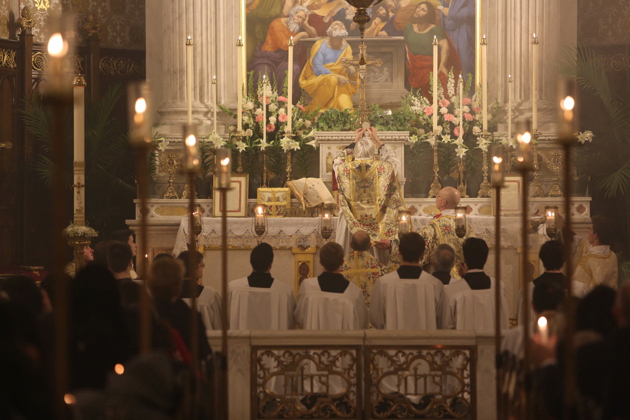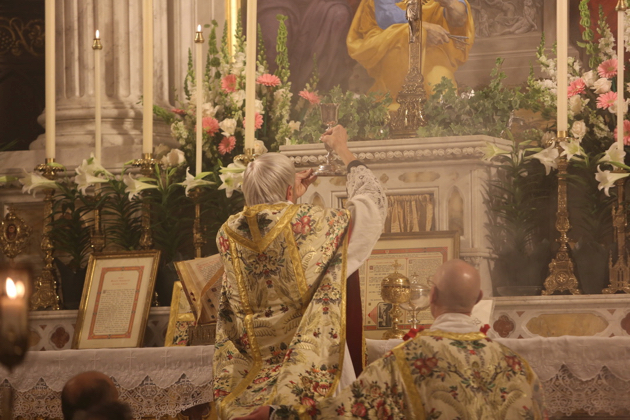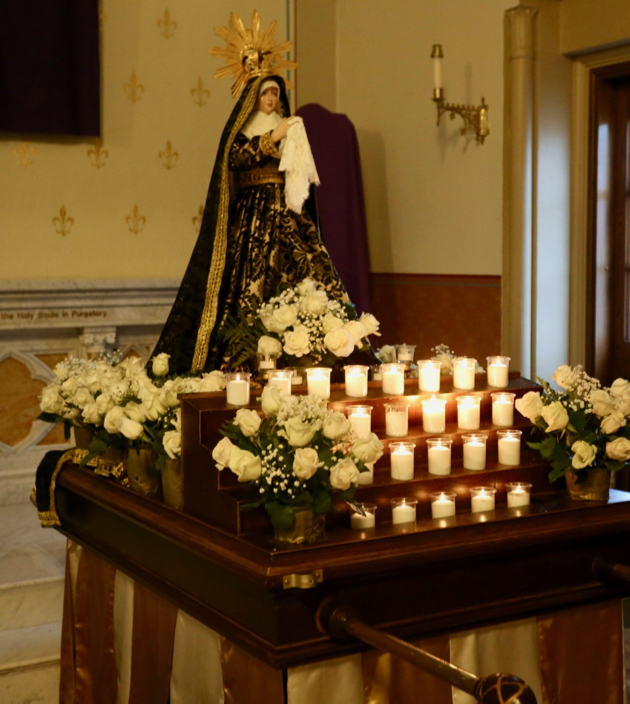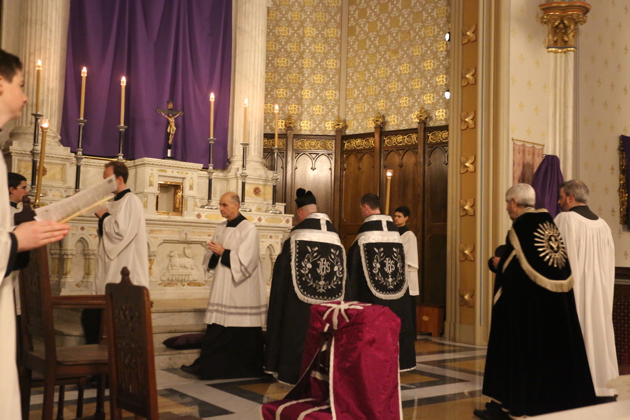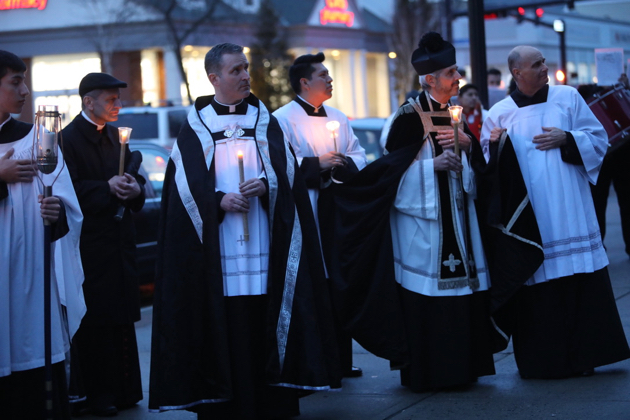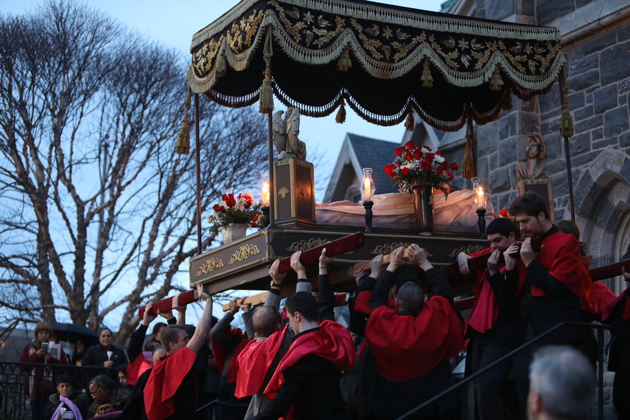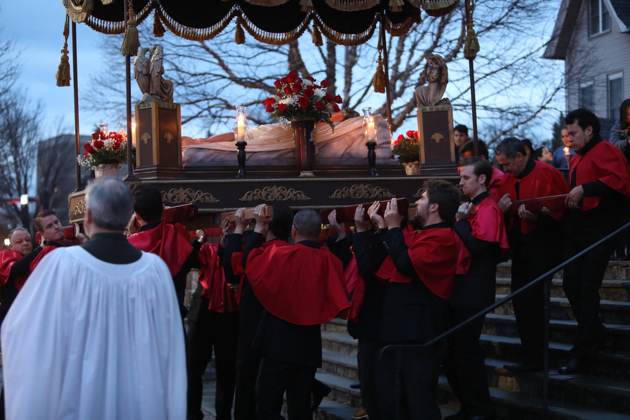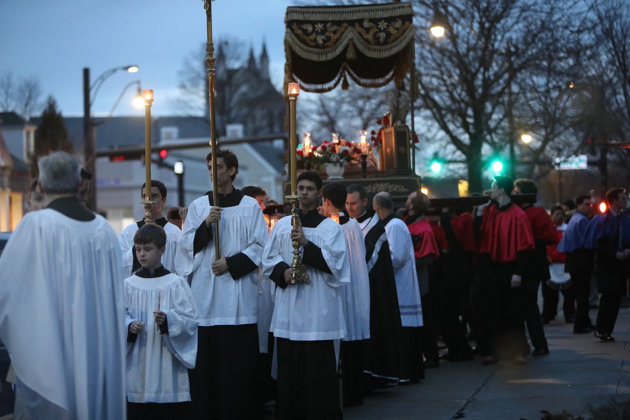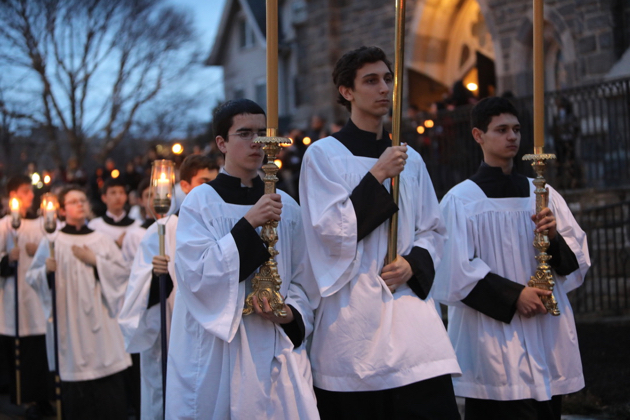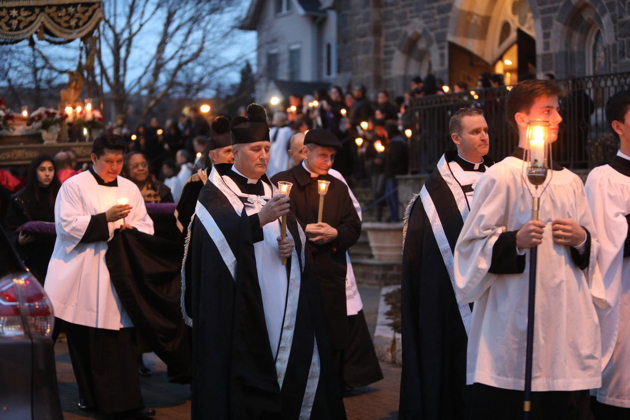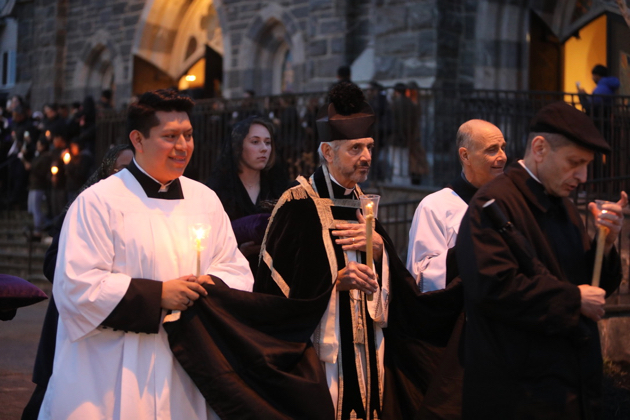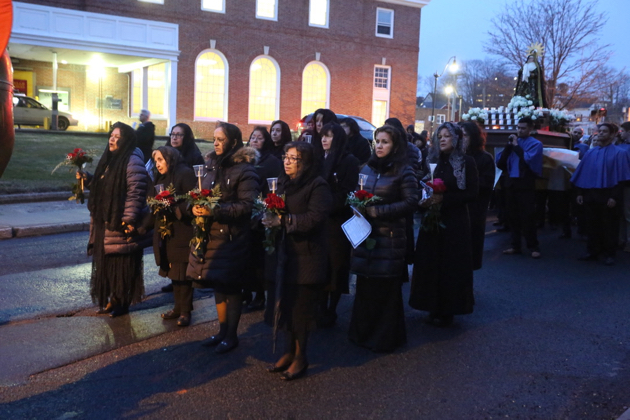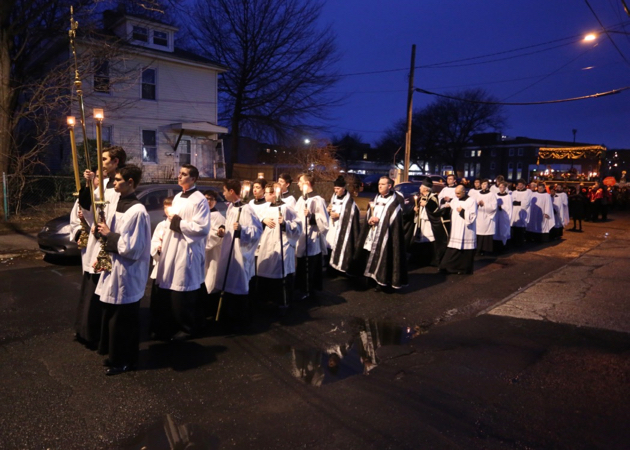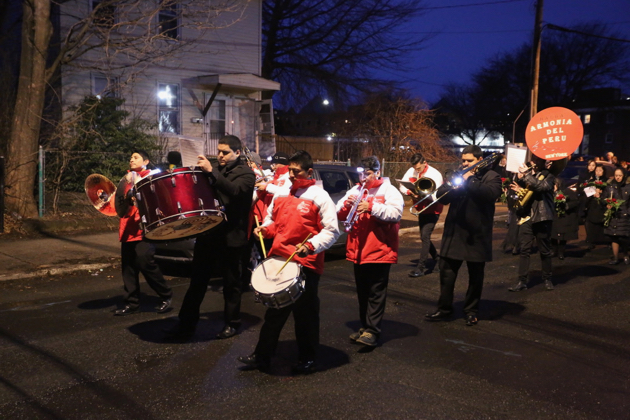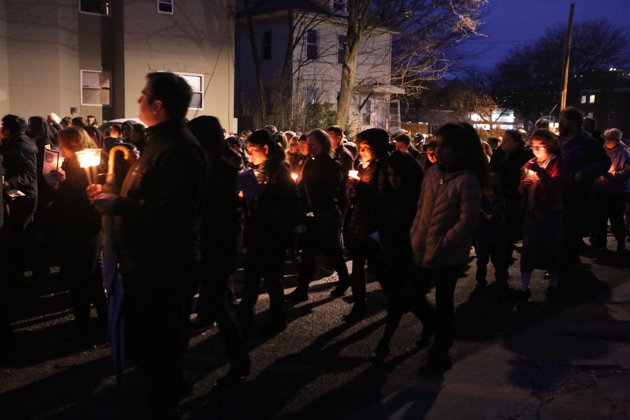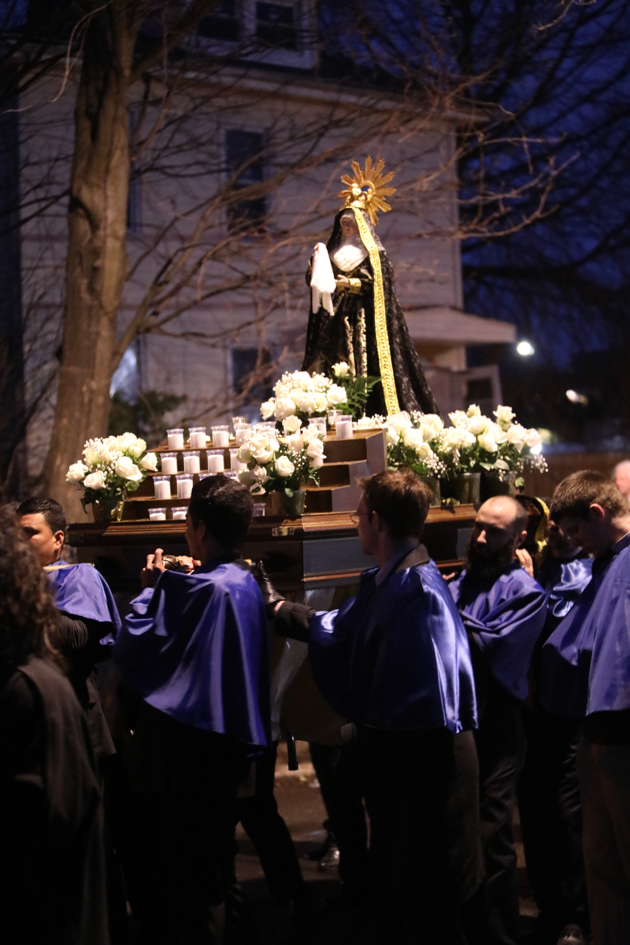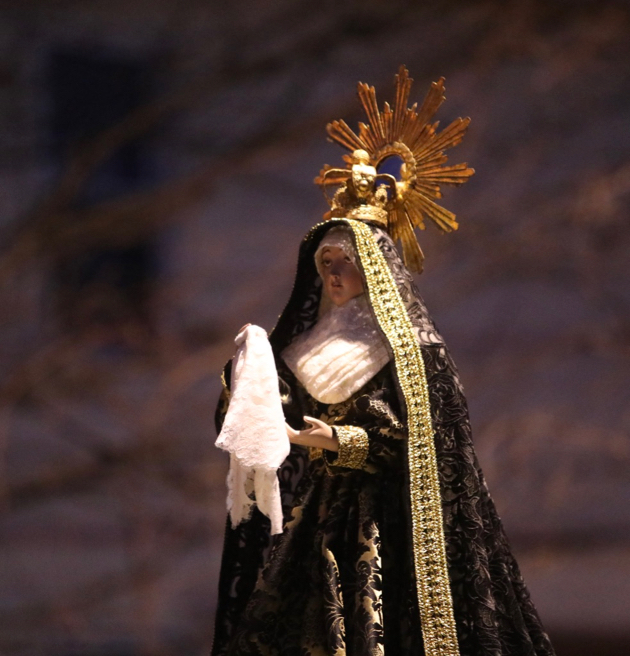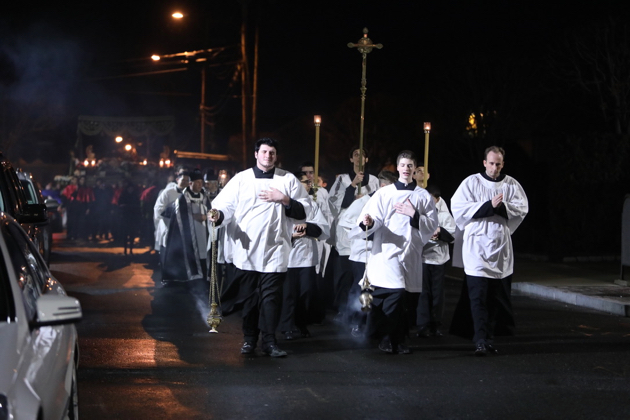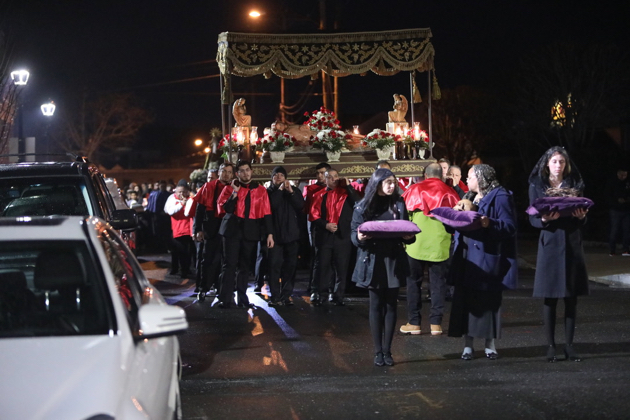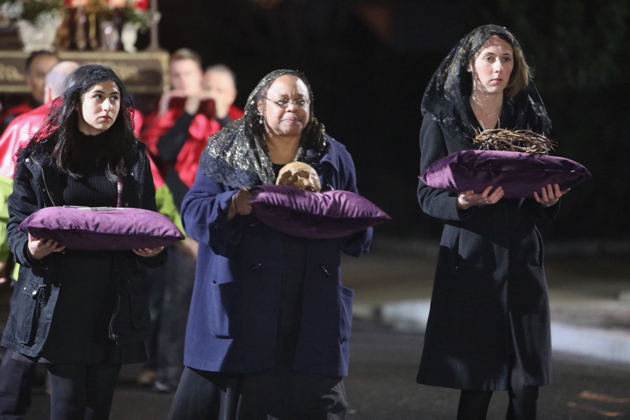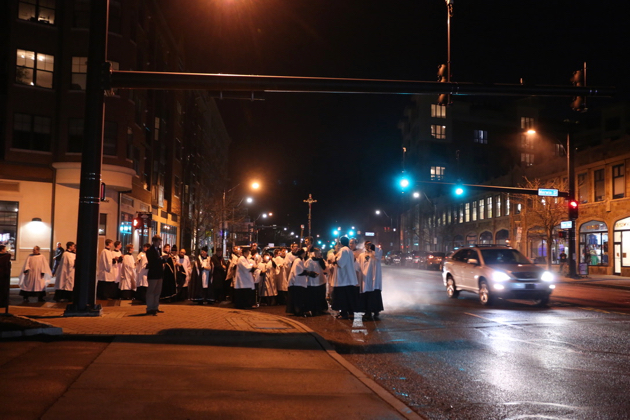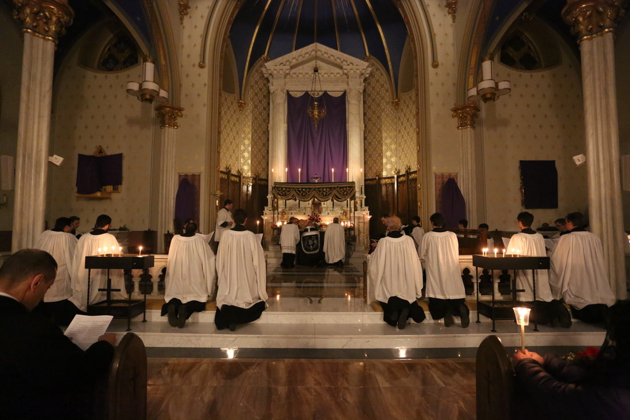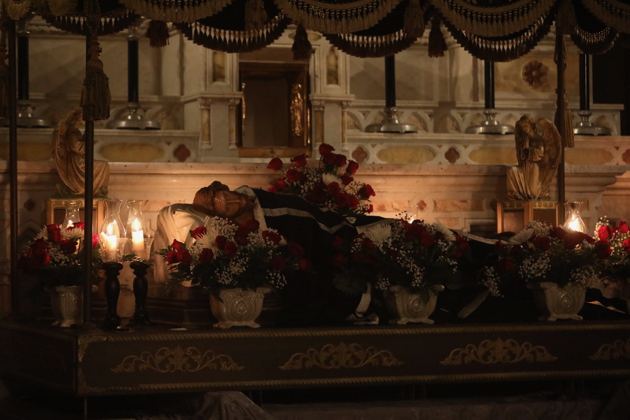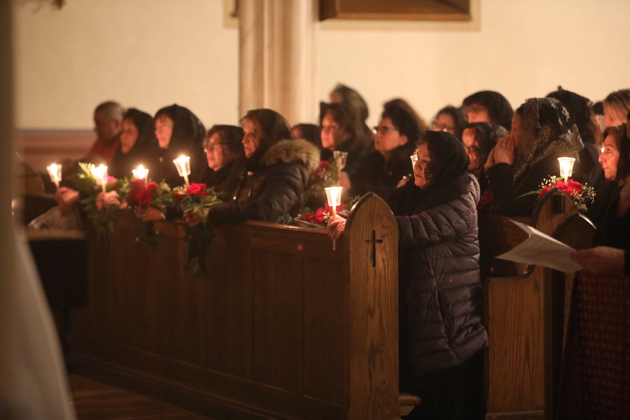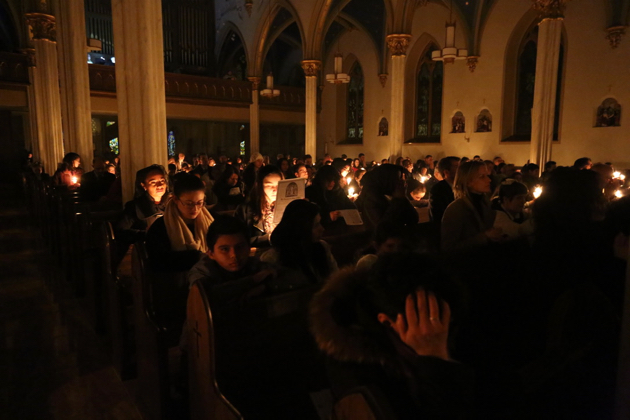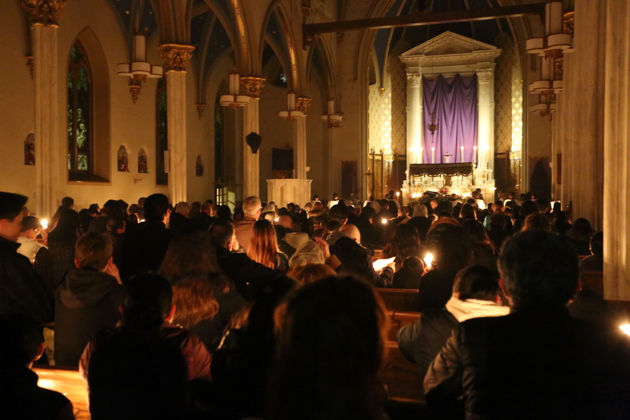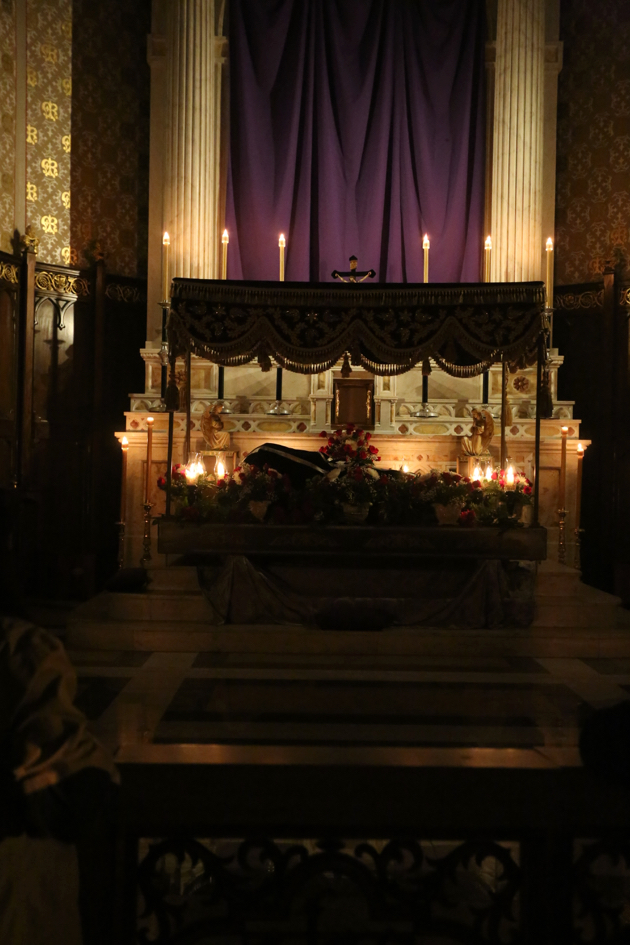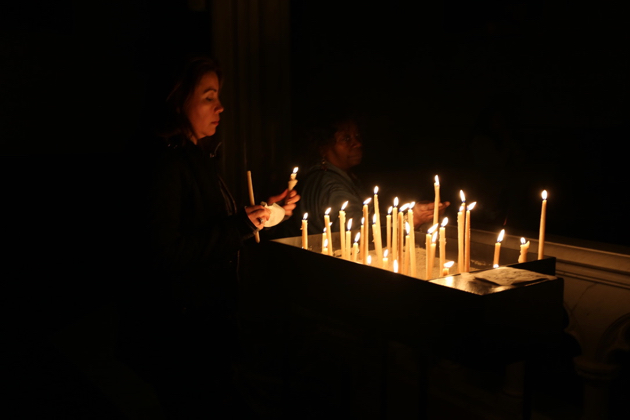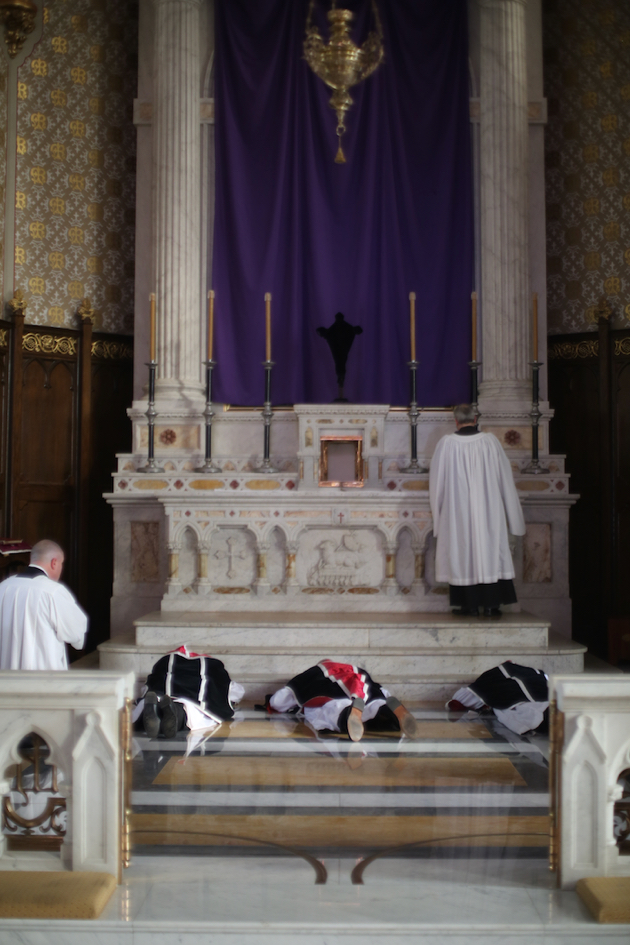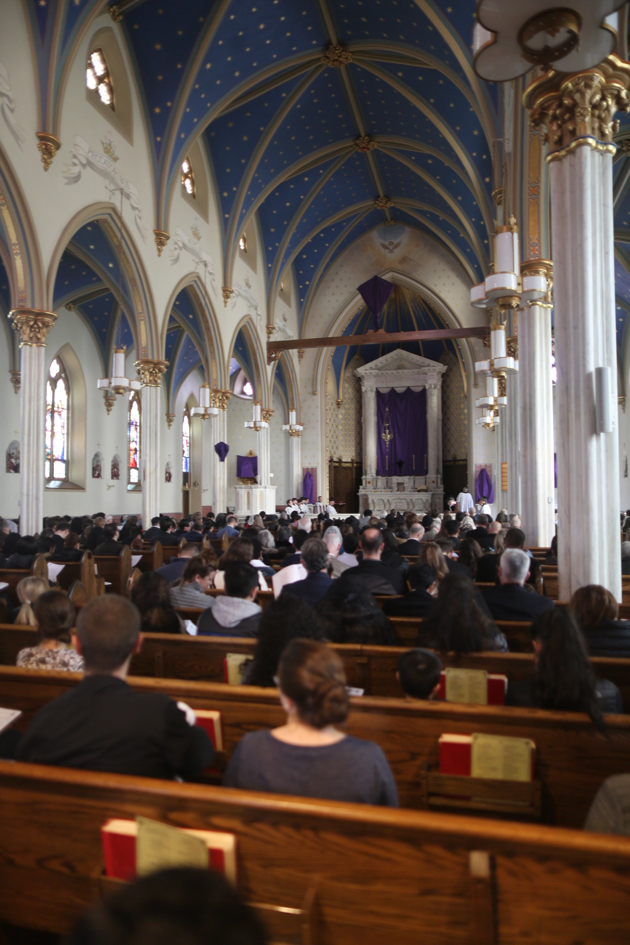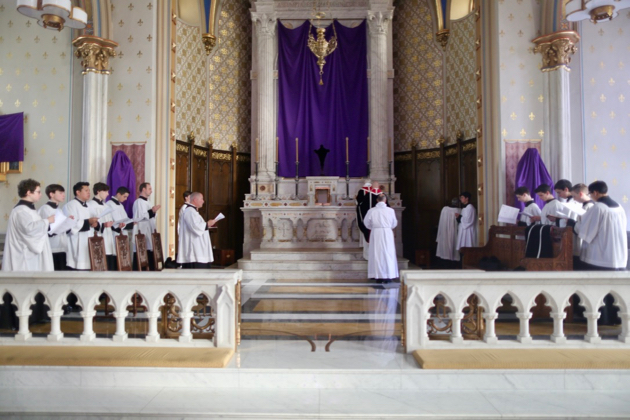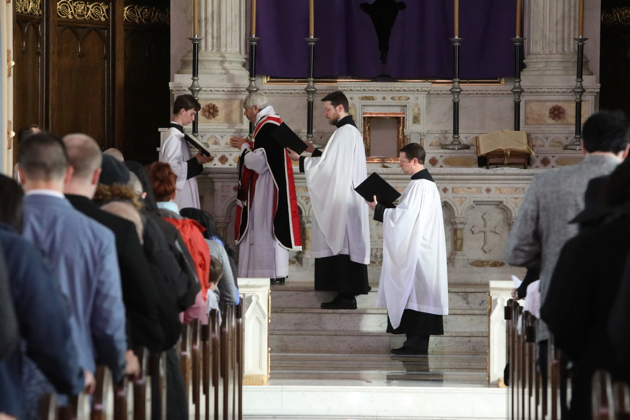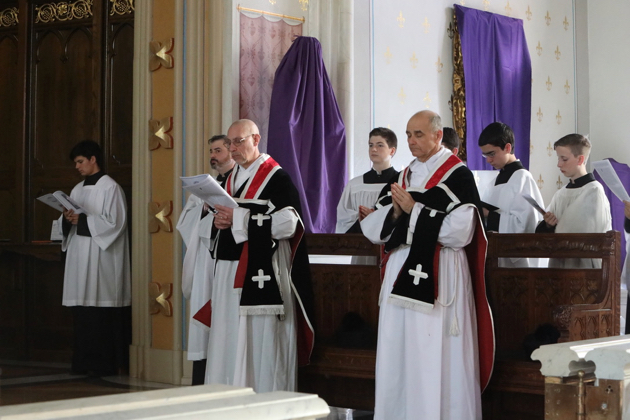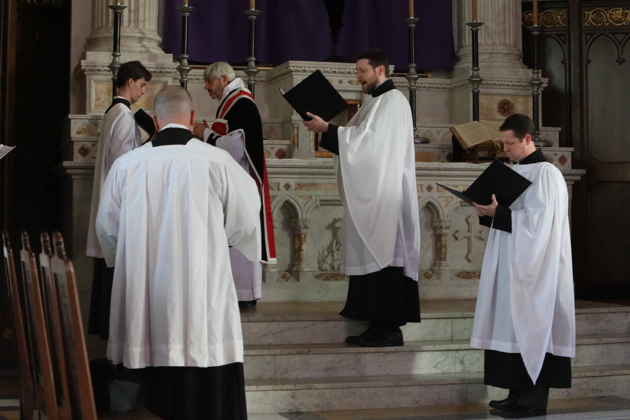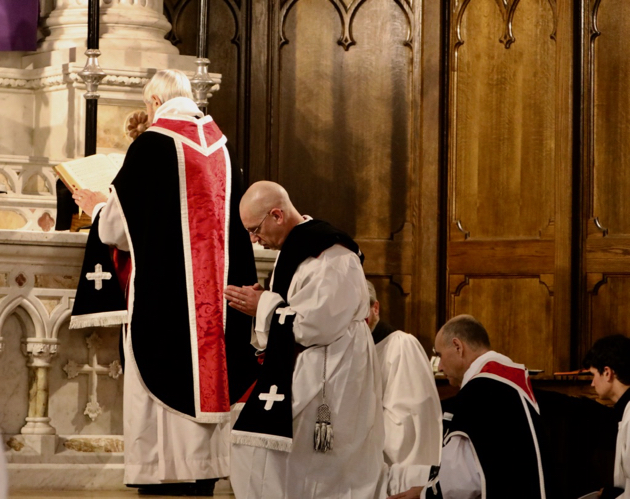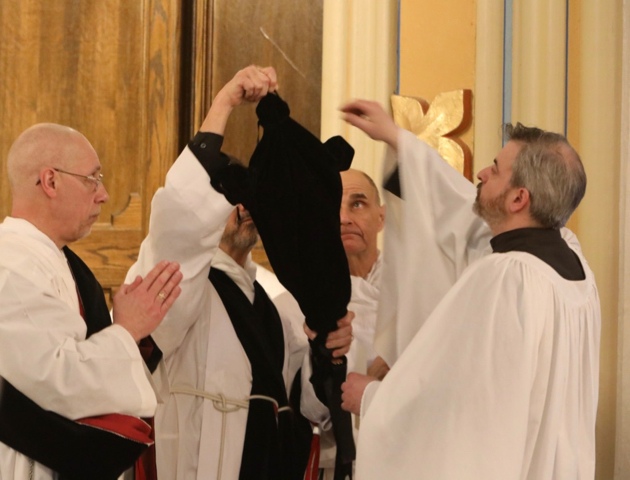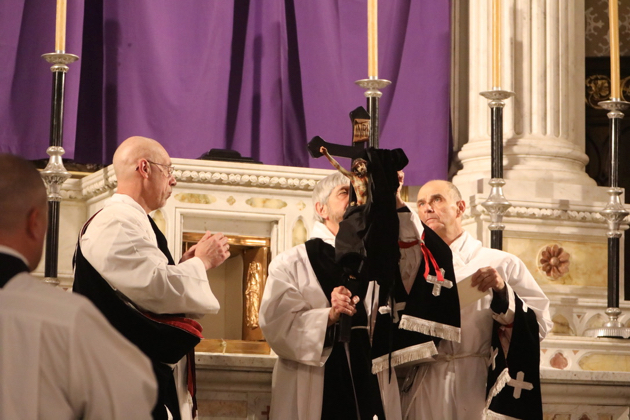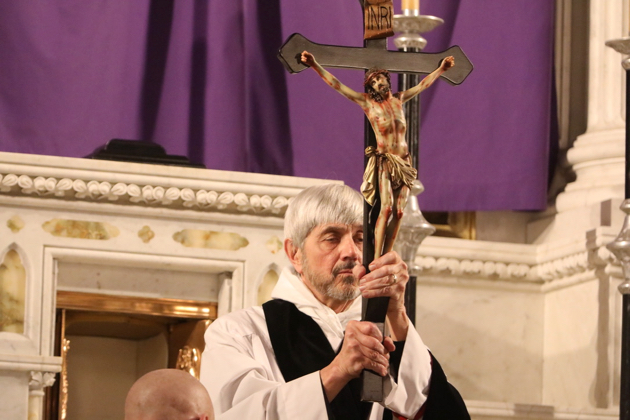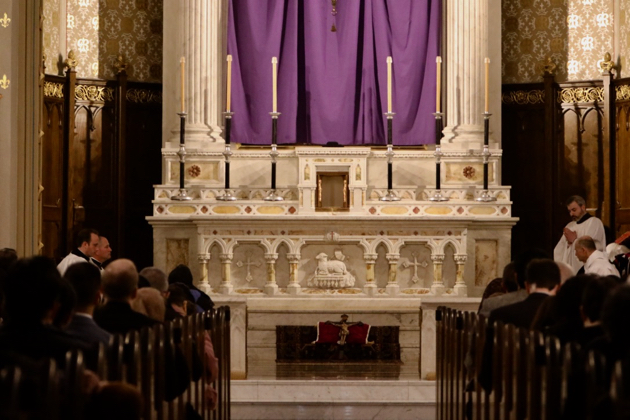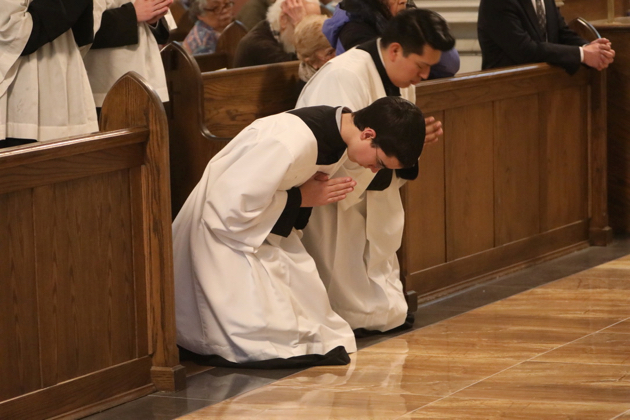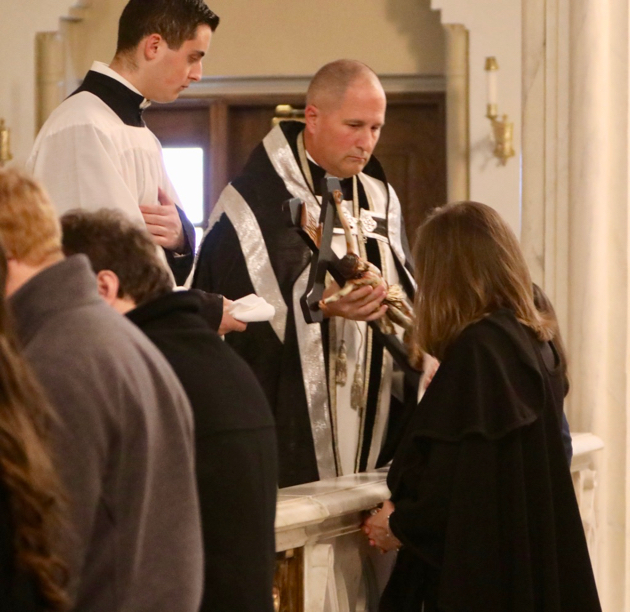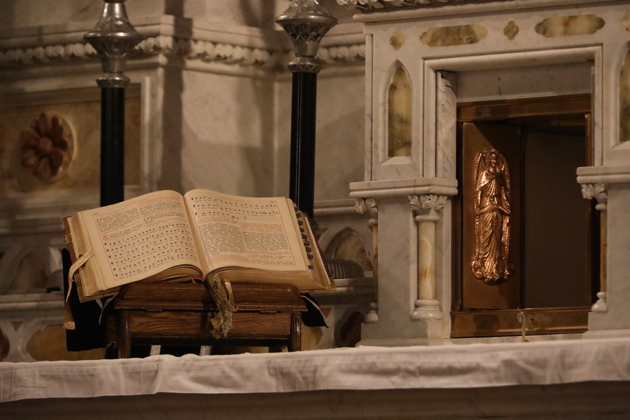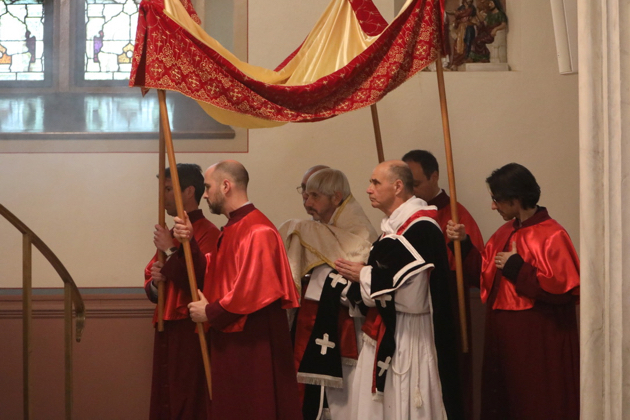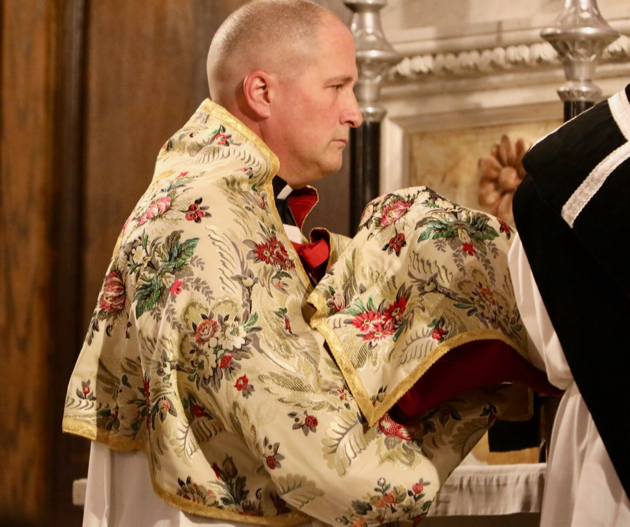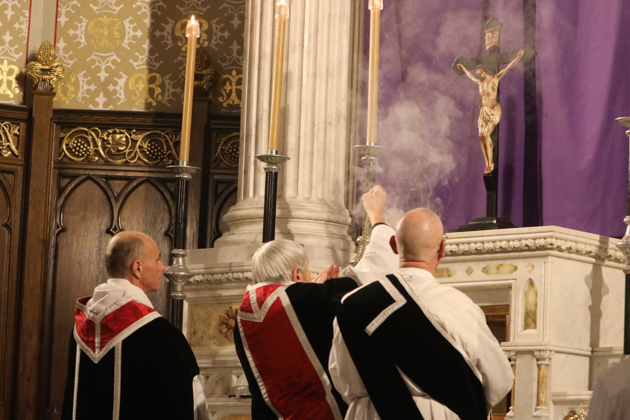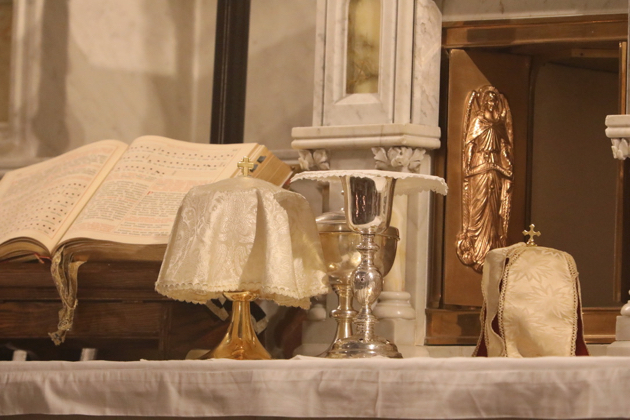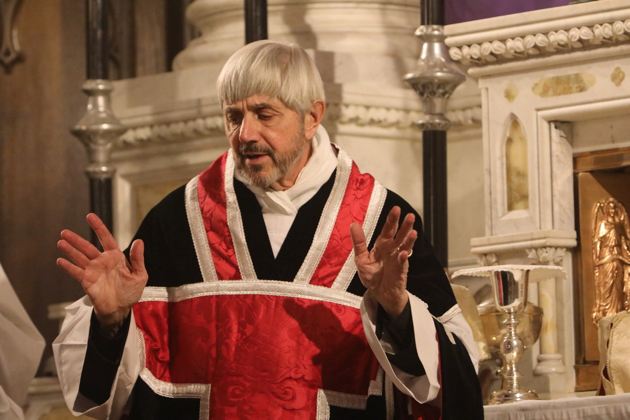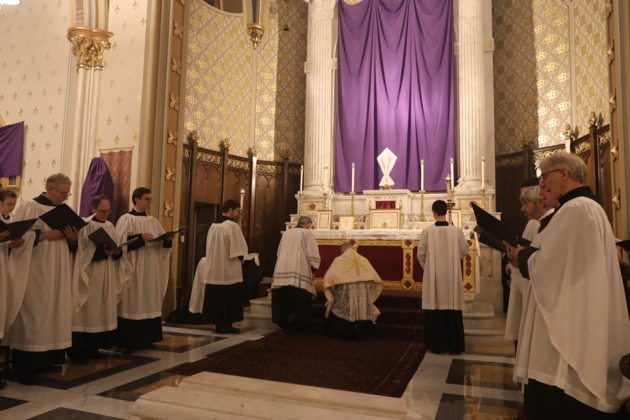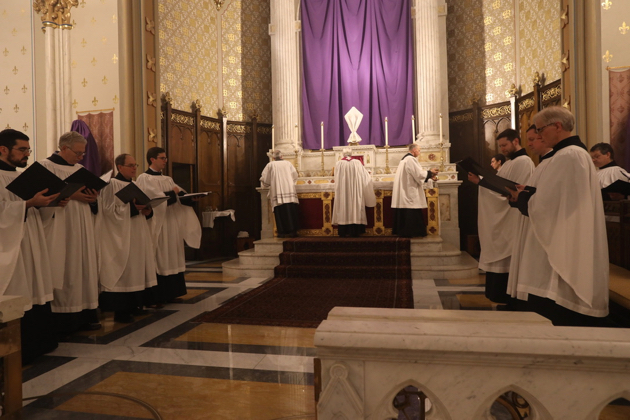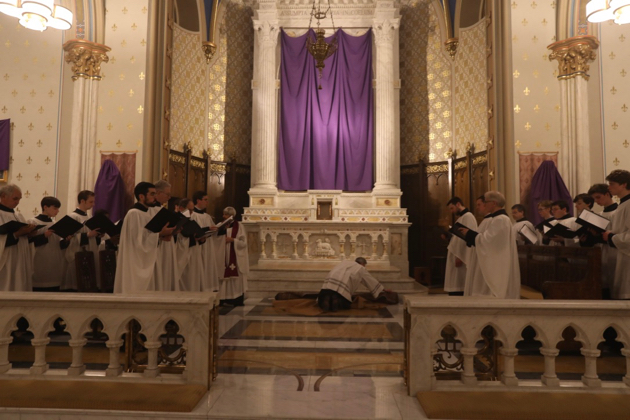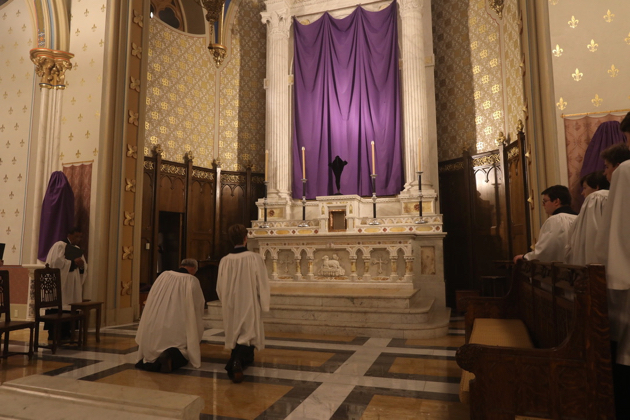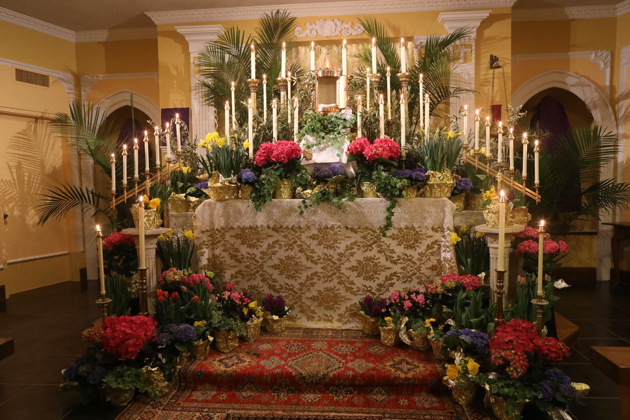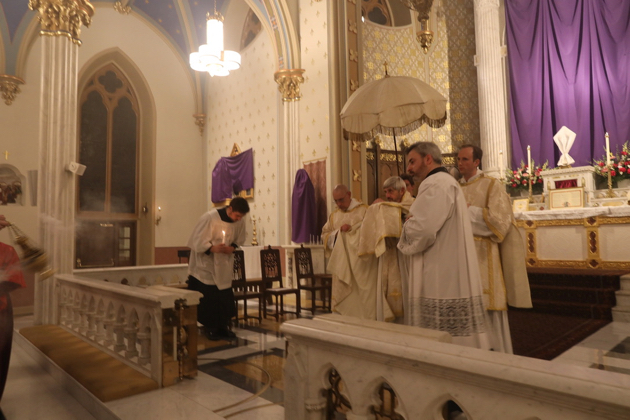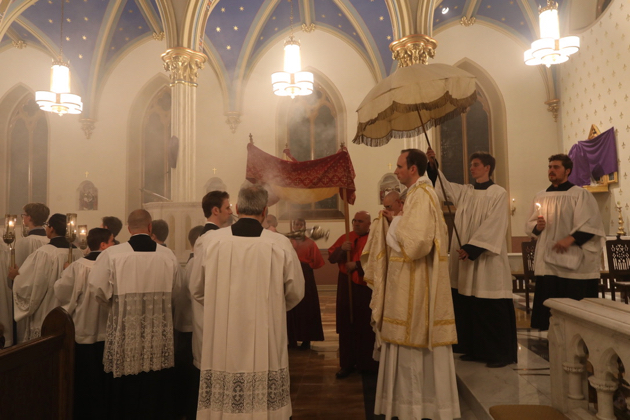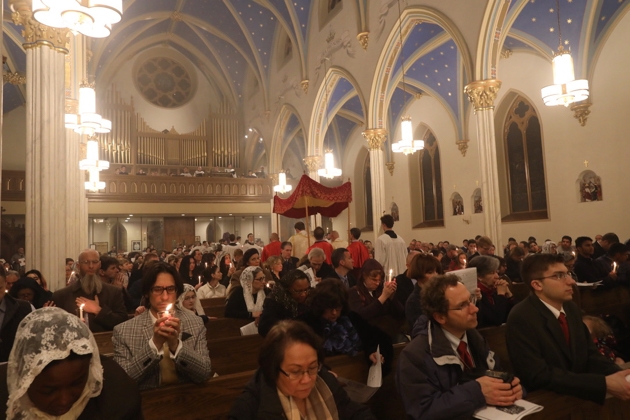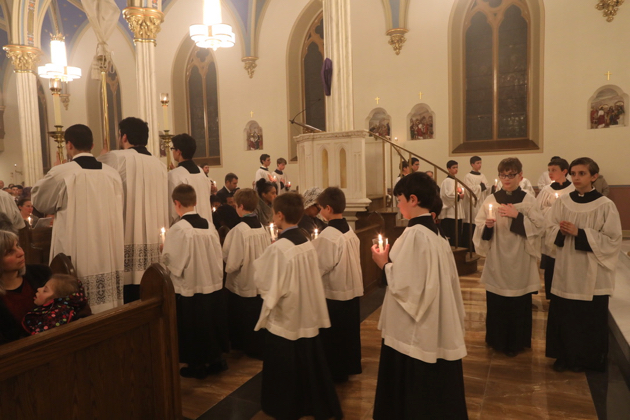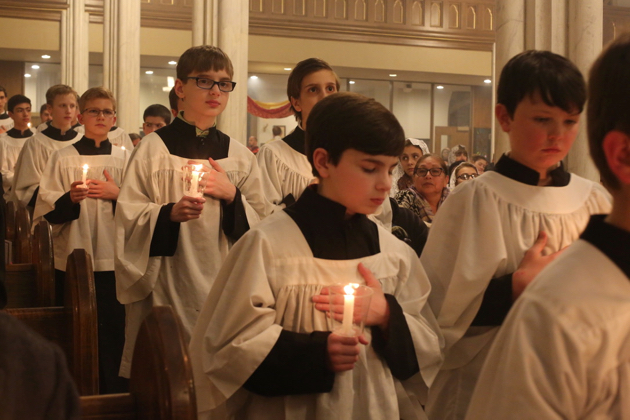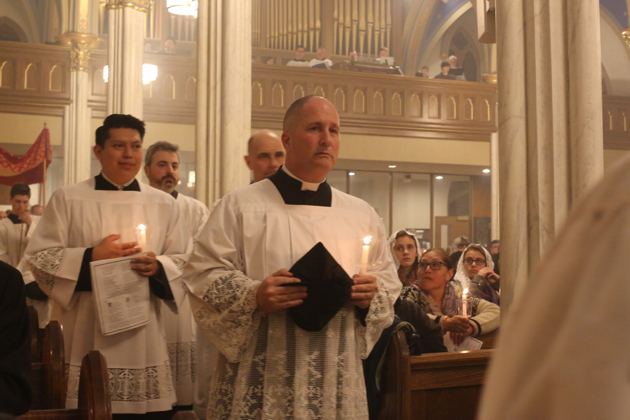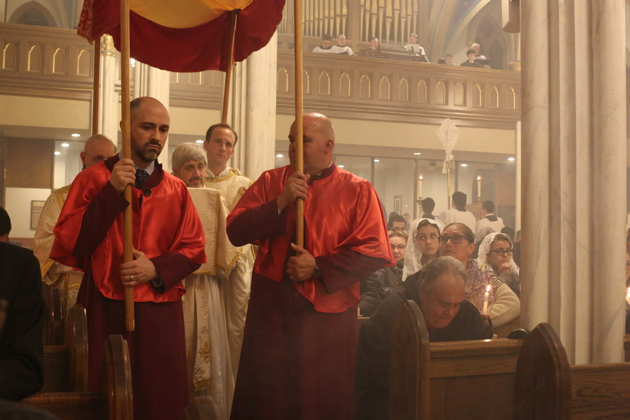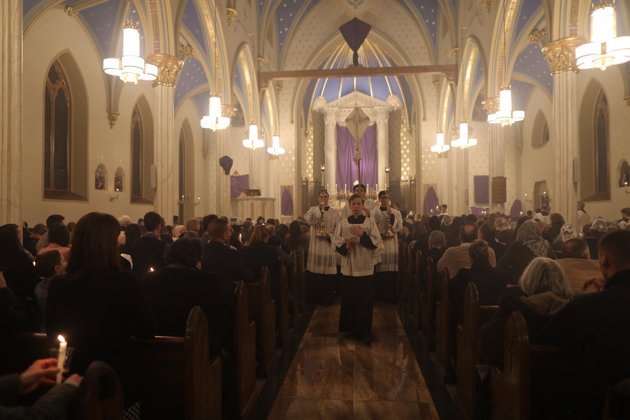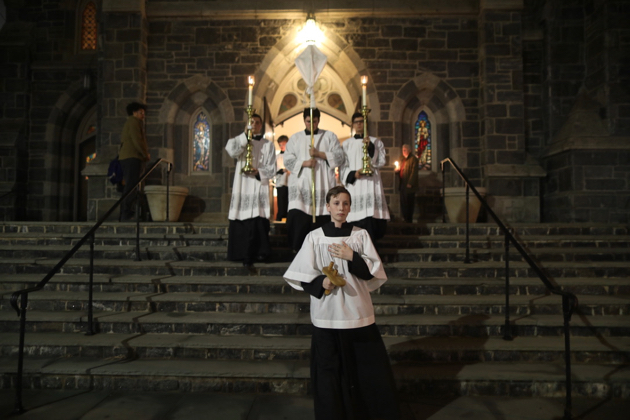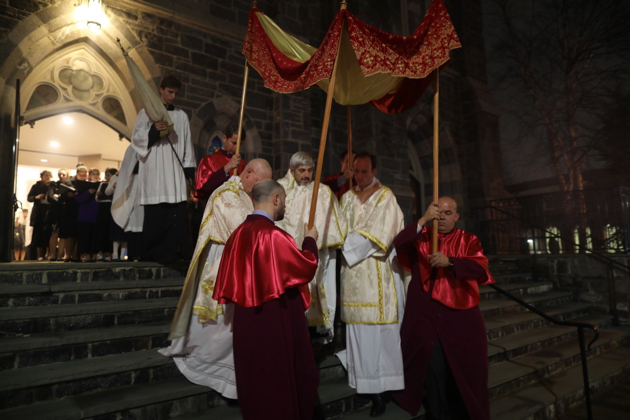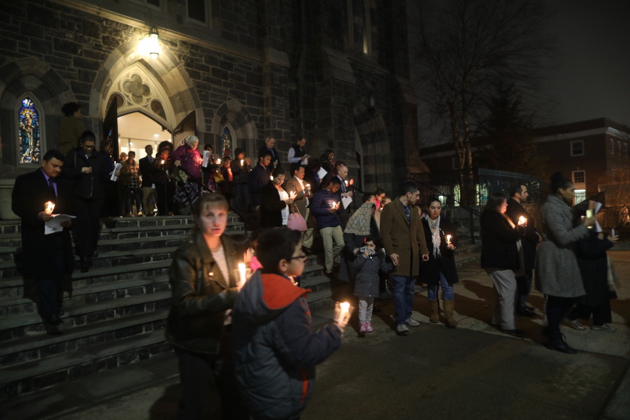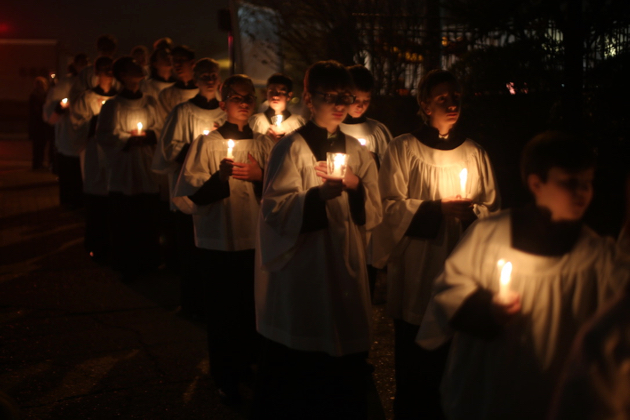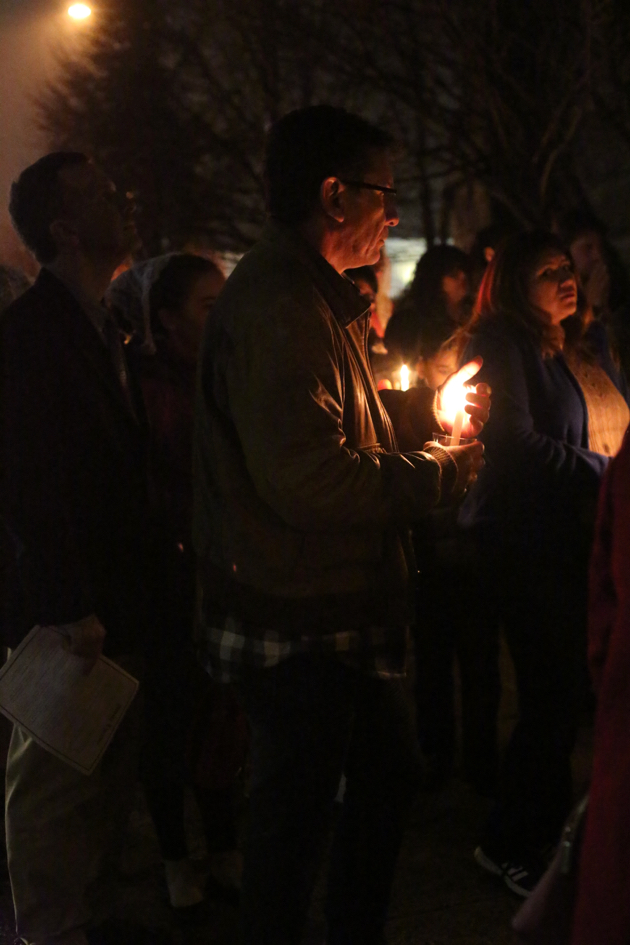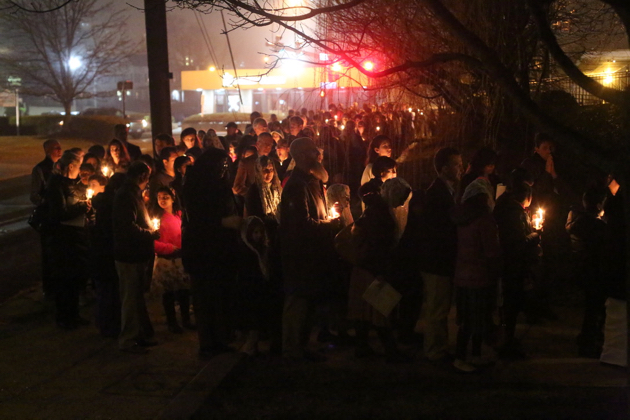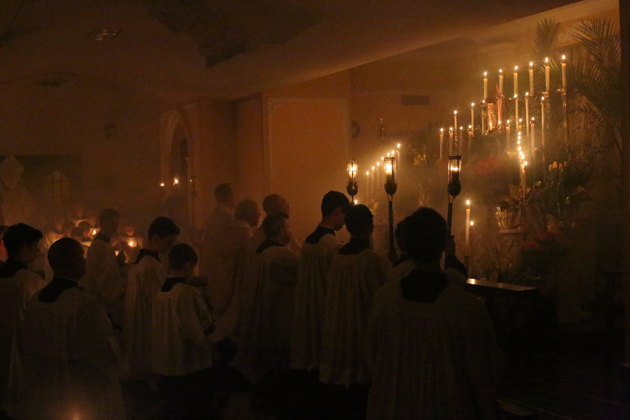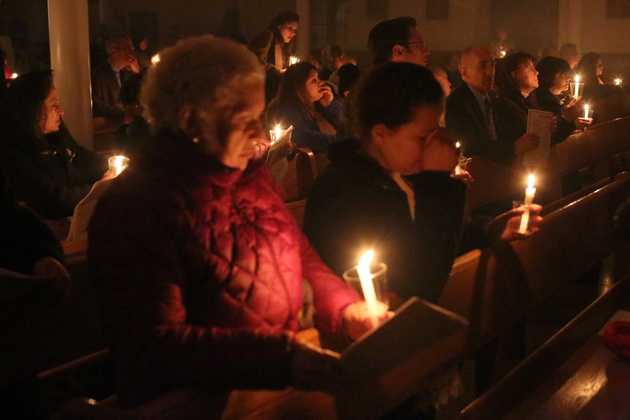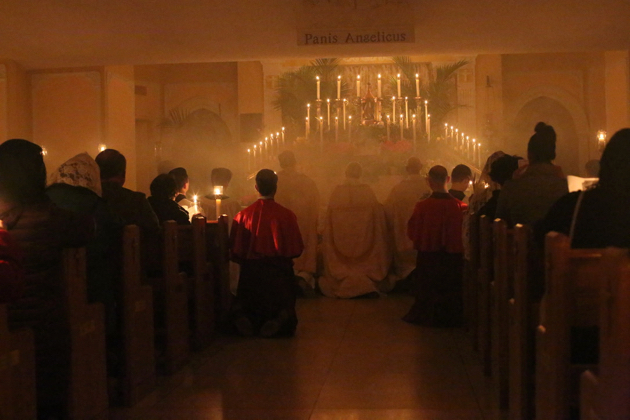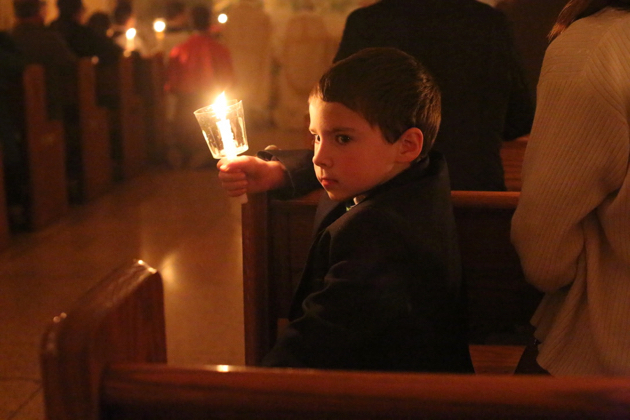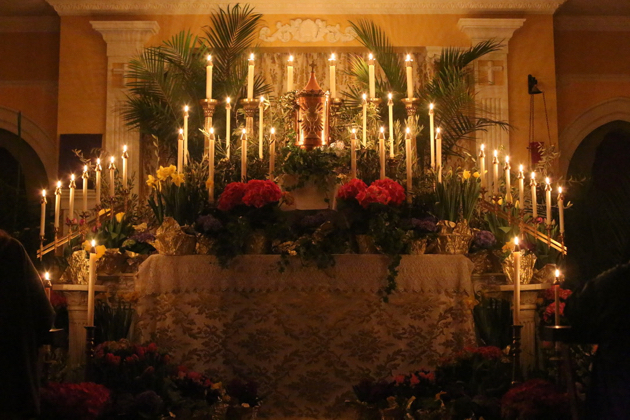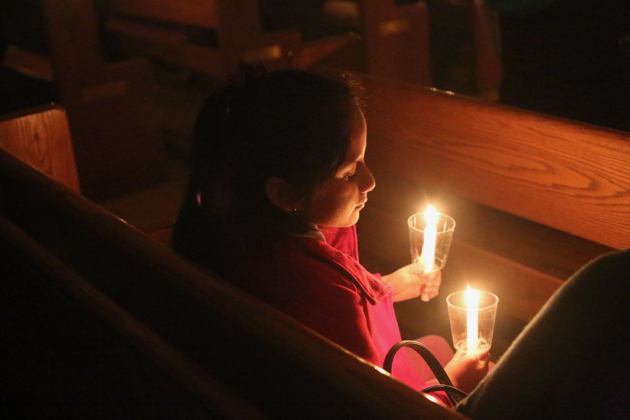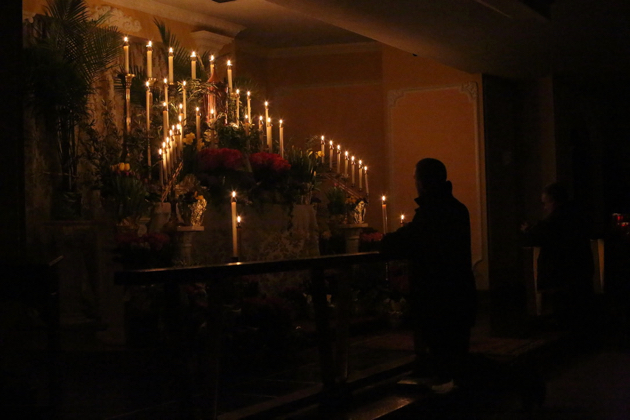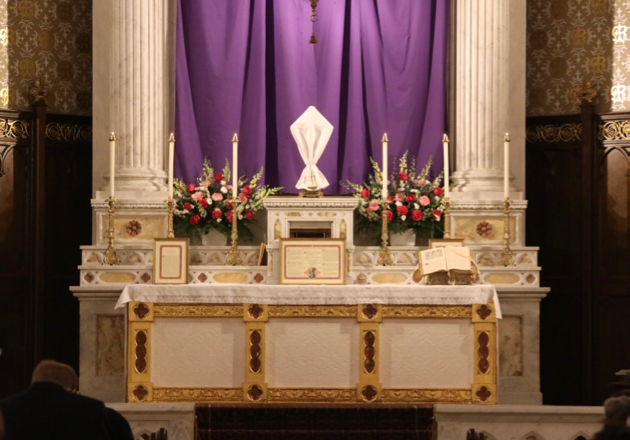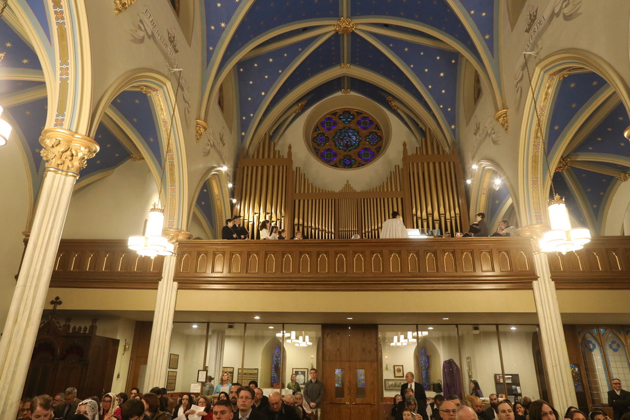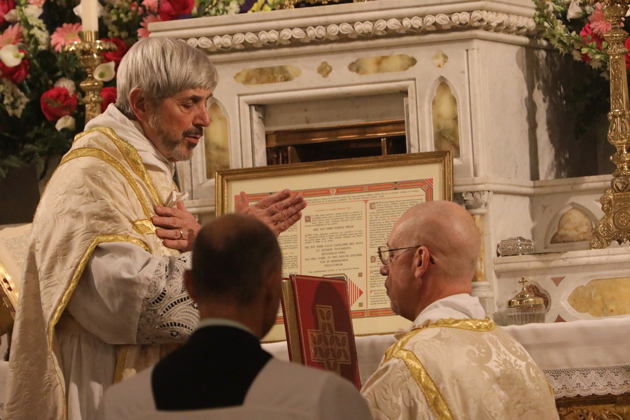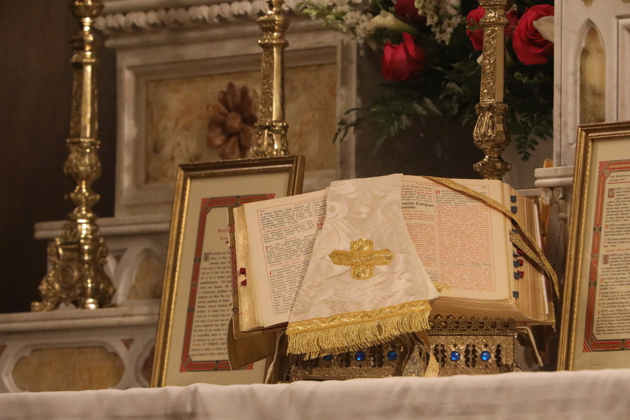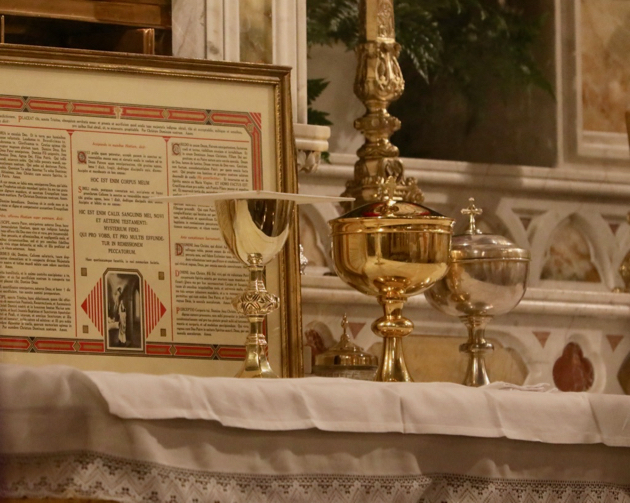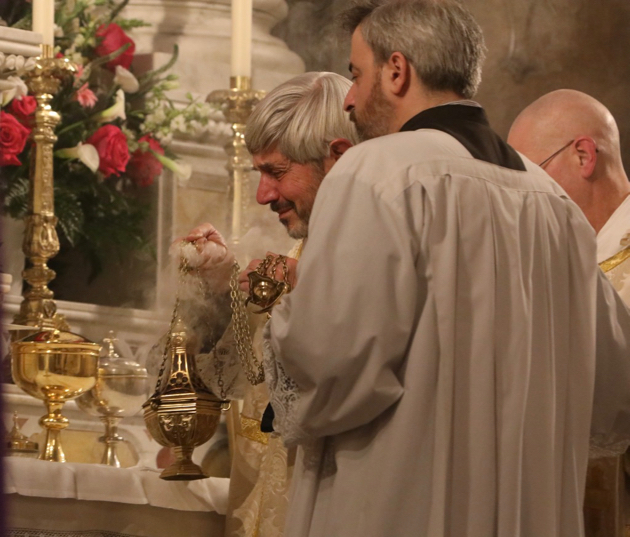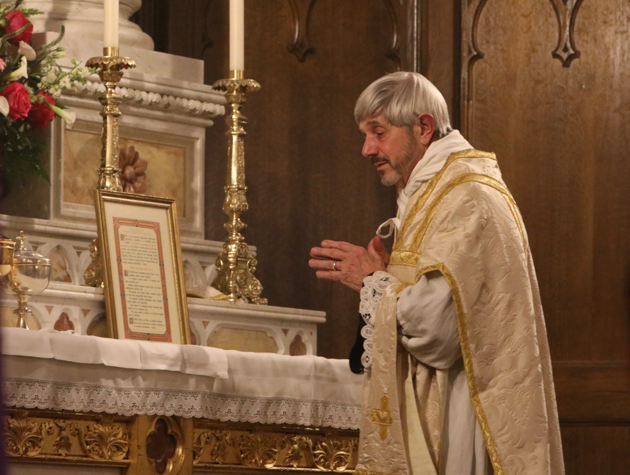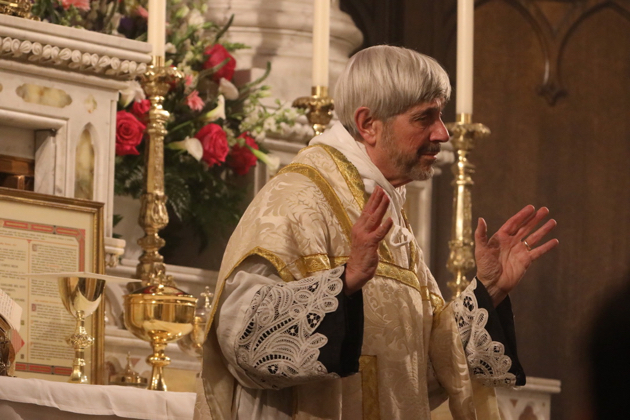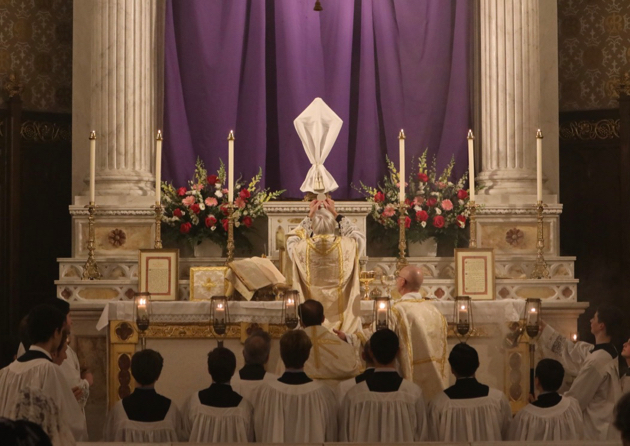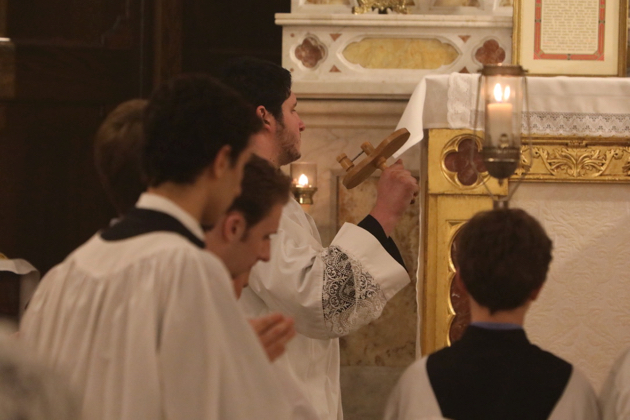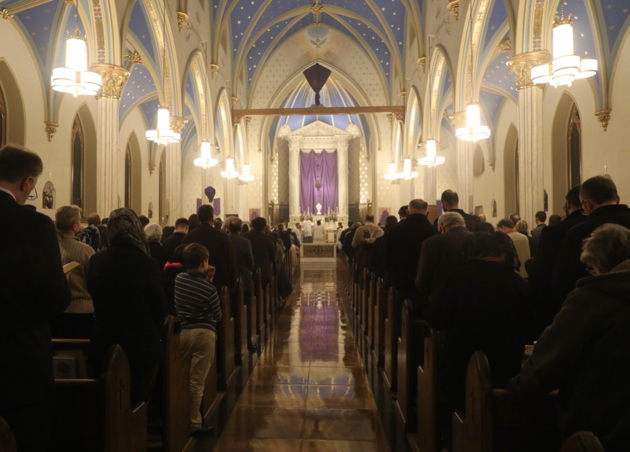Fr. Leo Joseph Camurati, O.P., offered his first traditional Mass this Sunday at the Church of St. Agnes in New York. Photo courtesy of Diana Yuan.
28 May
2018
19 May
2018
A Solemn Mass votive Mass to Our Lady Help of Christians was offered yesterday for the persecuted Church in China at the Basilica of St. John the Evangelist in Stamford, CT. The celebrant was Fr. Cyprian La Pastina. This Mass anticipates Annual World Day of Prayers for China on May 24, which was instituted in 2008 by His Holiness Benedict XVI. The Mass was sponsored by the Cardinal Kung Foundation.
17 Apr
2018
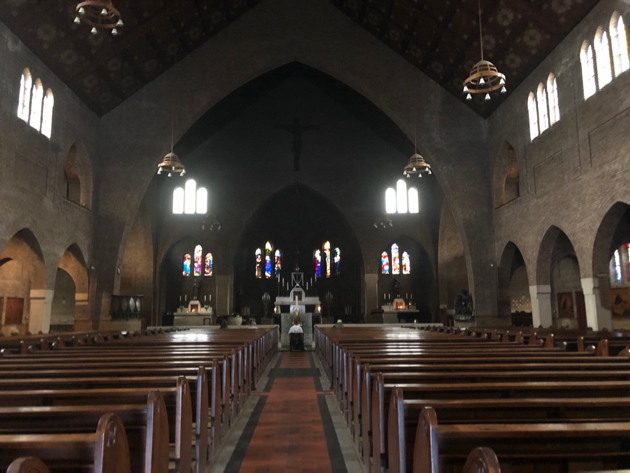
(Above) The immense church of Our Lady Queen of Peace. On a Friday afternoon the peace of this church is only disturbed by 3-4 worshippers. (The photograph exaggerates the brightness of the interior)
Amsterdam, like Vienna, gives us a real sense of the end of European and Christian civilization. It’s no accident that Camus’ The Fall was set here. Homosexuality, cannabis, whores in display windows and relentless business activity dominate the “public square”- while a handful of believers huddles here and there amid the chaos.
It was not always so. In a once working class but currently trendy neighborhood “De Pijp” we find a grand Catholic church built in the 1920’s: “Our Lady Queen of Peace.” I read that so many Catholic families were moving into this area in the 1920’s – assisted by Catholic organizations – that it became known as “Popeville” (Papendorp). “Queen of Peace” – I’m told that was a popular appellation for Catholic Churches at that time – after the First World War – in the Netherlands
Those days are long gone. The once exemplary Catholic Church of the Netherlands was one of the earliest casualties of Vatican II (the “Dutch Catechism!”) Today, as one source specifically notes, there are no more large Catholic families living in the neighborhood of Our Lady Queen of Peace. But some souls still come to this church to worship amid the silence and the darkness…
The architecture – in a typical local style of the 1920’s – reminds the New York visitor of St Catherine of Siena church in Manhattan.
(Above and below) The chapel of Our Lady – with an image in a style that should appeal to fans of the “other modern” as promoted in the New Liturgical Movement a few years ago. Judging from the candles lit before this image there still exists some kind of active devotion here.
(Above and below) This church has an unusual – at least to me – set of stained glass windows illustrating the litany of Loretto. Not all are in as good condition as these.
(Above) Three women and (I assume) a priest singing vespers early Friday evening, concluding with the “Regina Caeli” (in Latin) sung before the chapel of Our Lady).
1 Apr
2018
Easter Sunday at St. Mary’s Norwalk
Posted by Stuart Chessman Published in Masses, Photos, Website HighlightsWe conclude our series of posts on the liturgies of Holy Week at St. Mary’s parish, Norwalk CT with these images of Easter Sunday Mass. Since Palm Sunday it has been an unforgettable journey through salvation history effected by the power of the Traditional liturgy in its completeness. Our thanks to the priests, the deacon, the musicians, the ministers and everyone from the parish involved in making this special week possible.
Victimae Paschali Laudes immolent Christiani…
Ite missa est, alleluia, alle-lu-ia.
1 Apr
2018
The Easter Vigil at St. Mary’s Church, Norwalk
Posted by Stuart Chessman Published in Masses, Photos, Website Highlights(We include in this post, some of the notes in the program for the Easter Vigil written by John Pia)
The Paschal Vigil represents the culmination of the Church’s liturgical year. The faithful await the crucified Christ, resurrected from the tomb, just as the catechumens of this night will die to sin in the waters of baptism, and will be resurrected with Christ into a new and eternal life.
The celebrant and ministers—vested in penitential violet, the celebrant in cope, the ministers in folded chasubles—approach to sactify the new fire, in anticipation of the light of Easter Day.
The deacon changes his penitental folded chasuble into the white dalmatic of joy.
The deacon takes up the triple-branched reed, whose staff represents the bronze serpent which Moses fashioned on a rod to heal the Israelites in the desert, and whose three candles mystically symbolize the three days in the tomb, as well as the three Marys approaching the tomb on Easter morn. A taper is lit from the new fire, and a procession is formed; the faithful follow the clergy into the church.
Three times along the way the procession stops, and one of the three candles in lighted from the new fire: at each lighting the faithful should genuflect, save the subdeacon who bears the cross. The deacon sings “The light of Christ” each time on a higher pitch, to which the people respond “Thanks be to God”.
When the sacred ministers achieve the sanctuary, the deacon hands the reed over, and seeks a blessing from the celebrant.
The deacon proceeds to consecrate the unlit Paschal candle by the great Easter proclamation, the ancient “Exsultet.” The deacon and his retinue face towards the North: towards those dark regions that do not yet know the Light of Christ.
The deacon pauses to pierce the Paschal Candle with the five grains of incense in the form of a cross, symbolizing the five Holy Wounds of our Lord at His crucifixion.
The deacon takes up the reed and lights the Paschal Candle with its flame, which itself was lighted from the new fire.
The dedication candles and the lamps of the church are now lighted from the Paschal Candle.
The Prophecies: The Twelve Prophecies of the Vigil are among the oldest cycle of readings known in the Roman Rite, prefiguring our salvation and recounting the duties, trials, and hardships of the Christian, they form the final catechesis for the elect who are to be baptized. They are sung by a series of lectors to their own tone.
The Christenings: The catechumens to be baptized are now called forward by the deacon, and a procession is formed to the baptistery, in the back of the church, led by the Paschal Candle, as the choir sings the tract “Sicut Cervus,” the soul’s thirst for the grace of God.
Once inside the baptistery, the celebrant prays over the font, that the Lord will deign to remake those about to die to their old selves in its waters into His spiritual sons and daughters by the grace of His Spirit.
For a second time in this service, the preface dialogue and tone are employed for a major consecration, in this case, of the baptismal water. In this photo above, the celebrant plunges the Paschal Candle into the water thrice, deeper and deeper.
The acolyte removes some of the baptismal water for the aspersory: the celebrant sparges himself and his ministers with the Easter Water.
The assisting priest circles the church to sprinkle the faithful with Easter Water.
The celebrant pours the Oil of Catechumens and the Oil of Sacred Chrism into the baptismal water. The consecrated baptismal water will be retained in the font for the baptisms throughout the year.
The celebrant changes into white vestments. The catechumens are baptized.
The newly baptized receive their white garments—a symbol of their baptismal innocence—and their baptismal candles, symbolizing the new light of grace which they received.
The Confirmations: The procession returns to the sanctuary and the Paschal Candle is returned to its stand. The Confirmation candidates kneel.
The celebrant anoints each by name on the brow with the Chrism consecrated by the bishop on Spy Wednesday. He strikes the cheek of each, a sign of the hardships and mockery each will endure as a Christian.
The Litany of the Saints: While the cantors chant the Litany of the Saints, the sacred ministers retreat to the sacristy to change into festive vesture. Toward the end of the Litany, the celebrant and ministers return. The Mass of the Easter Vigil, due to its extreme antiquity, has no Introit, but instead the Litany is concluded with the solemn recitation of the Kyrie.
The celebrant intones the Gloria. The church bells are sounded throughout, the first time they have been heard since Maundy Thursday, and the images of the church are uncovered.
After the sub-deacon intones the Epistle, the celebrant begins a three-fold chanting of the Alleluia which the choir takes up, each time on a higher pitch.
For the singing of the Gospel, acolytes assist in lighting the candles of the faithful from the fire of the Paschal Candle.
The Canon of the Mass.
31 Mar
2018
Procession of the Dead Christ on Good Friday
Posted by Stuart Chessman Published in Events, Photos, Website Highlights31 Mar
2018
Good Friday at St. Mary’s, Norwalk
Posted by Stuart Chessman Published in Masses, Photos, Website Highlights30 Mar
2018
Holy Thursday at St Mary’s Norwalk: the Stripping of the Altars
Posted by Stuart Chessman Published in Masses, Photos, Website Highlights30 Mar
2018
Holy Thursday Procession at St. Mary’s, Norwalk
Posted by Stuart Chessman Published in Masses, Photos, Website Highlights30 Mar
2018
Holy Thursday Solemn Mass at St. Mary Norwalk
Posted by Stuart Chessman Published in Masses, Photos, Website HighlightsContact us
Register
- Registration is easy: send an e-mail to contact@sthughofcluny.org.
In addition to your e-mail address, you
may include your mailing addresss
and telephone number. We will add you
to the Society's contact list.
Search
Categories
- 2011 Conference on Summorum Pontifcum (5)
- Book Reviews (97)
- Catholic Traditionalism in the United States (24)
- Chartres pIlgrimage (17)
- Essays (177)
- Events (673)
- Film Review (7)
- Making all Things New (44)
- Martin Mosebach (35)
- Masses (1,347)
- Mr. Screwtape (46)
- Obituaries (18)
- On the Trail of the Holy Roman Empire (22)
- Photos (347)
- Pilgrimage Summorum Pontificum 2021 (7)
- Pilgrimage Summorum Pontificum 2022 (6)
- Pilgrimage Summorum Pontificum 2023 (4)
- Sermons (79)
- St. Mary's Holy Week 2019 (10)
- St. Mary's Holy Week 2022 (7)
- St. Mary's Holy Week 2023 (7)
- St. Mary's Holy Week 2024 (6)
- Summorum Pontificum Pilgrimage 2024 (2)
- Summorum Pontificum Pilgrimage 2025 (7)
- The Churches of New York (198)
- Traditionis Custodes (49)
- Uncategorized (1,379)
- Website Highlights (15)
Churches of New York
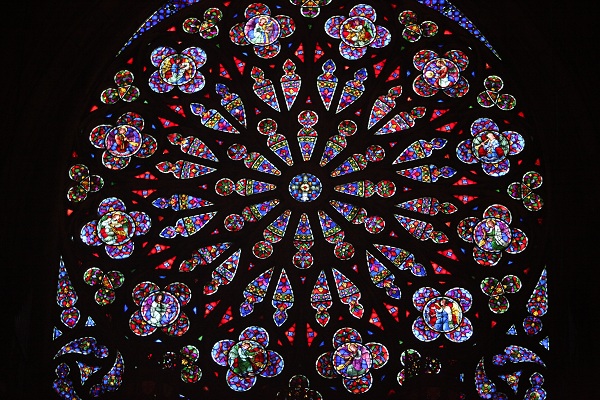
Holy Roman Empire
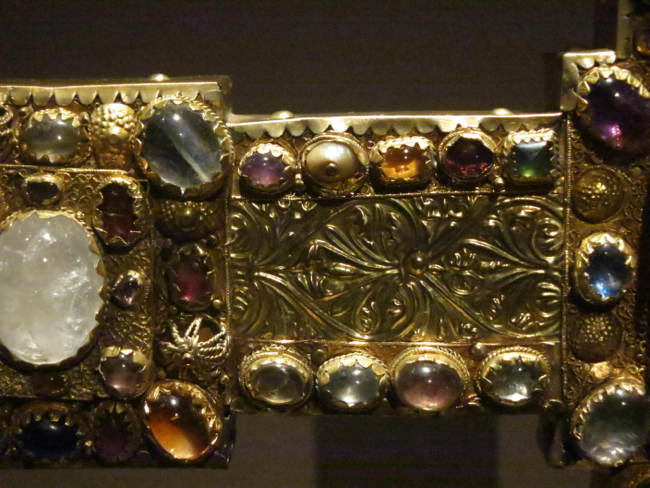
Website Highlights
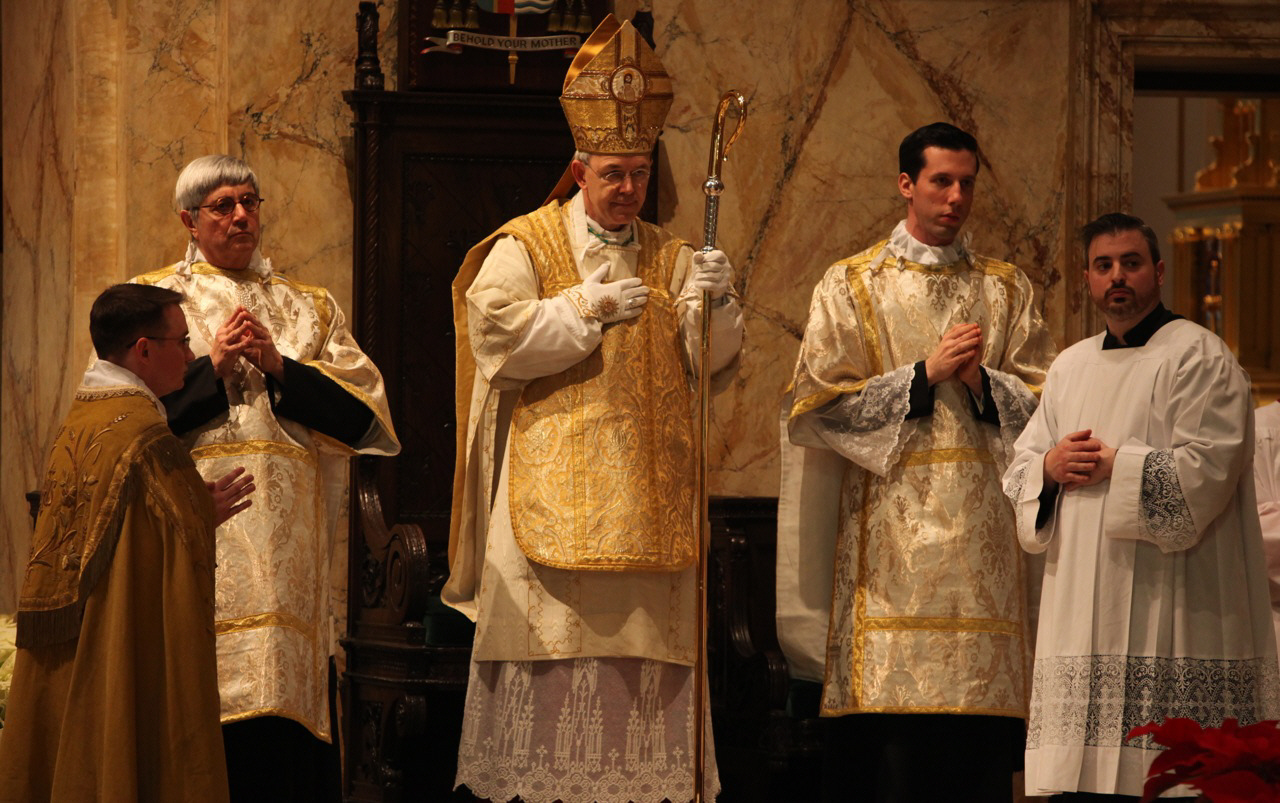
Archives
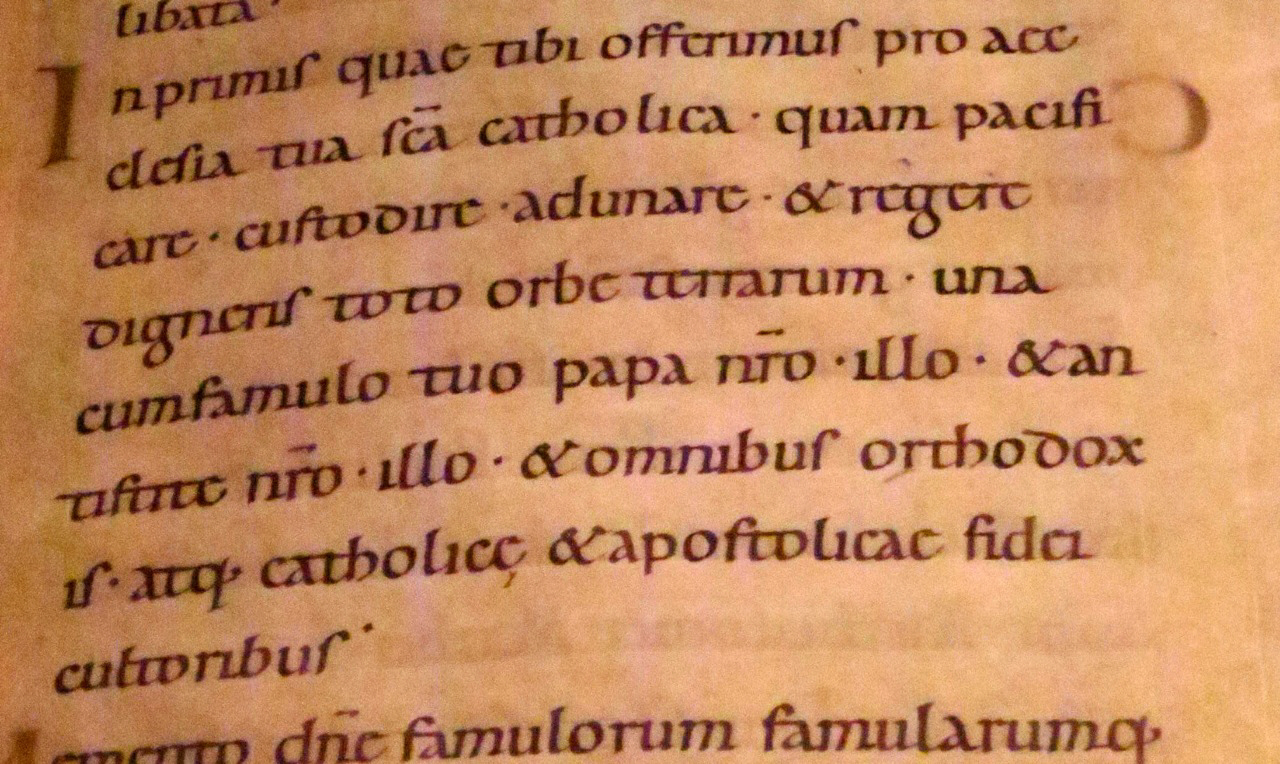
[powr-hit-counter label="2775648"]
